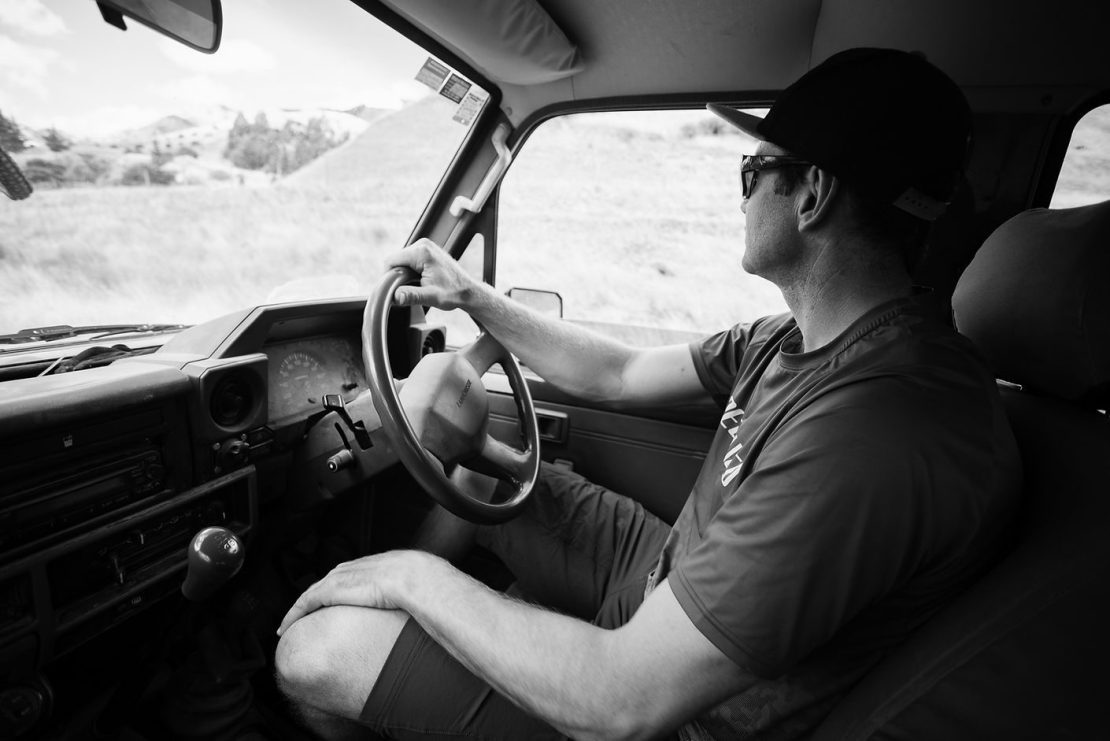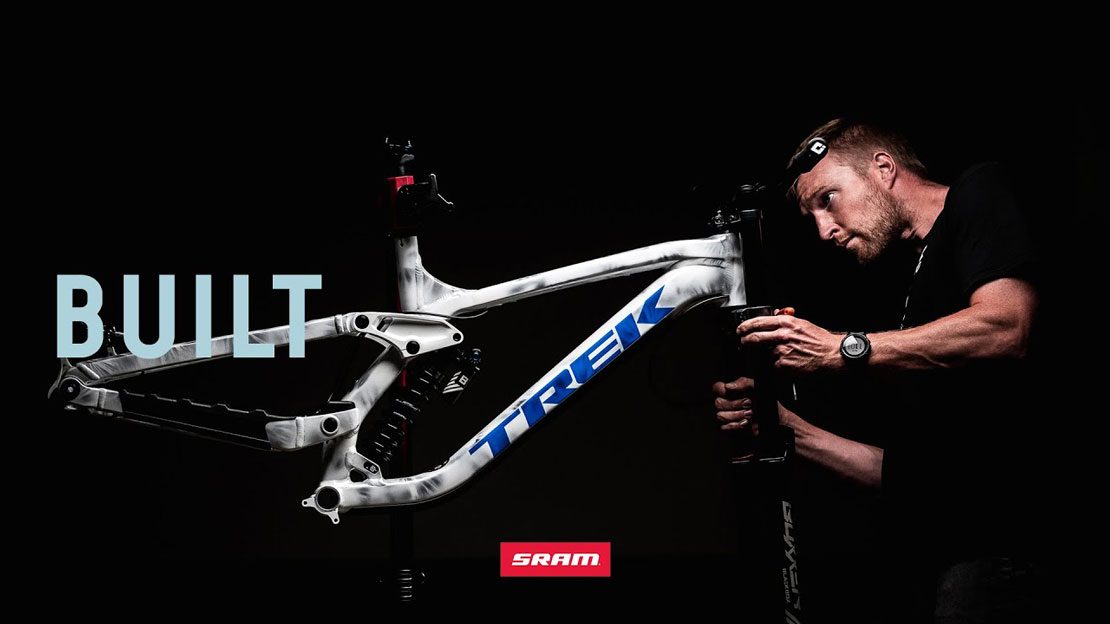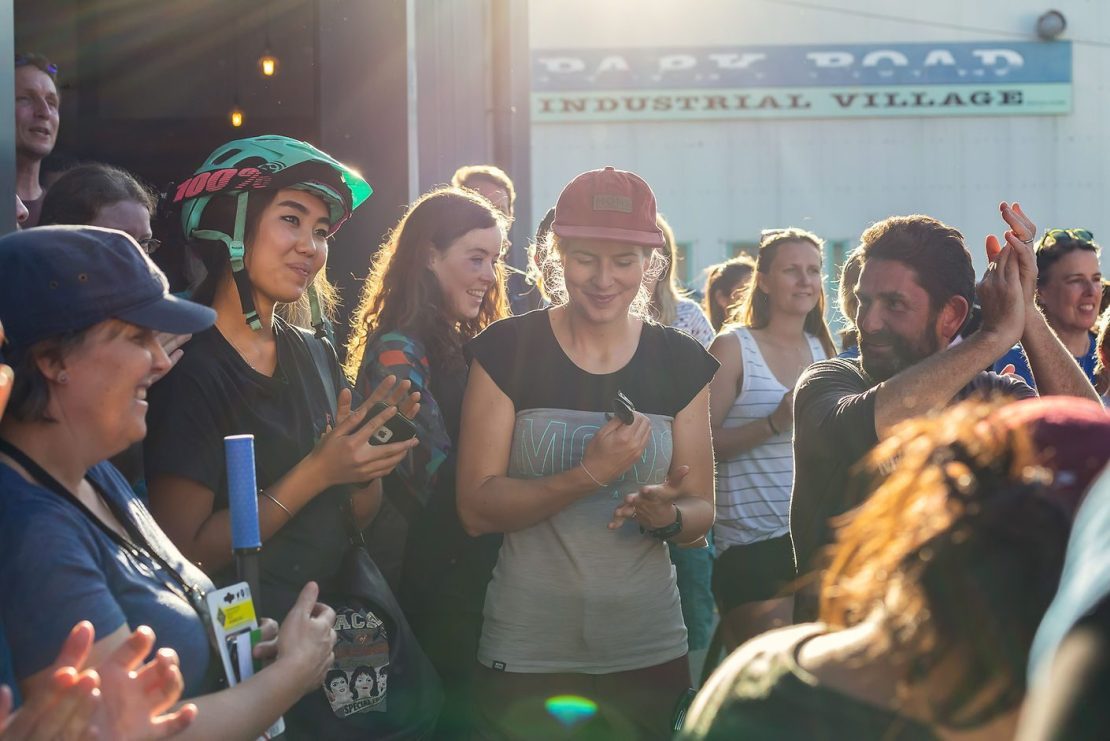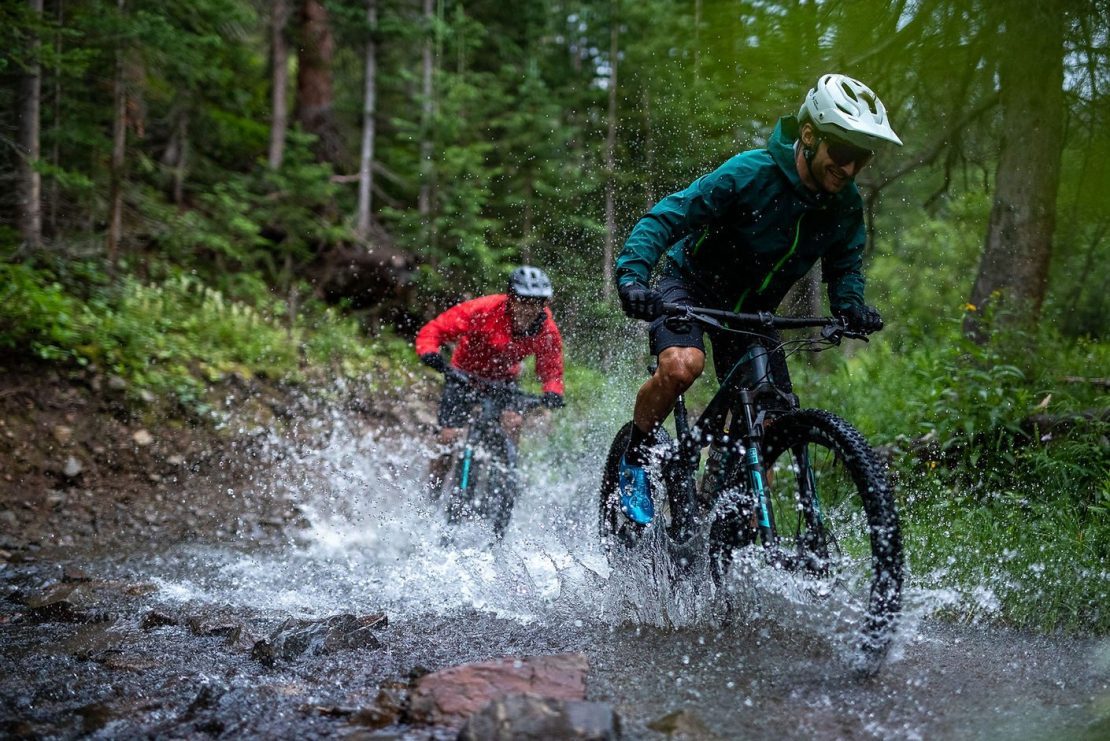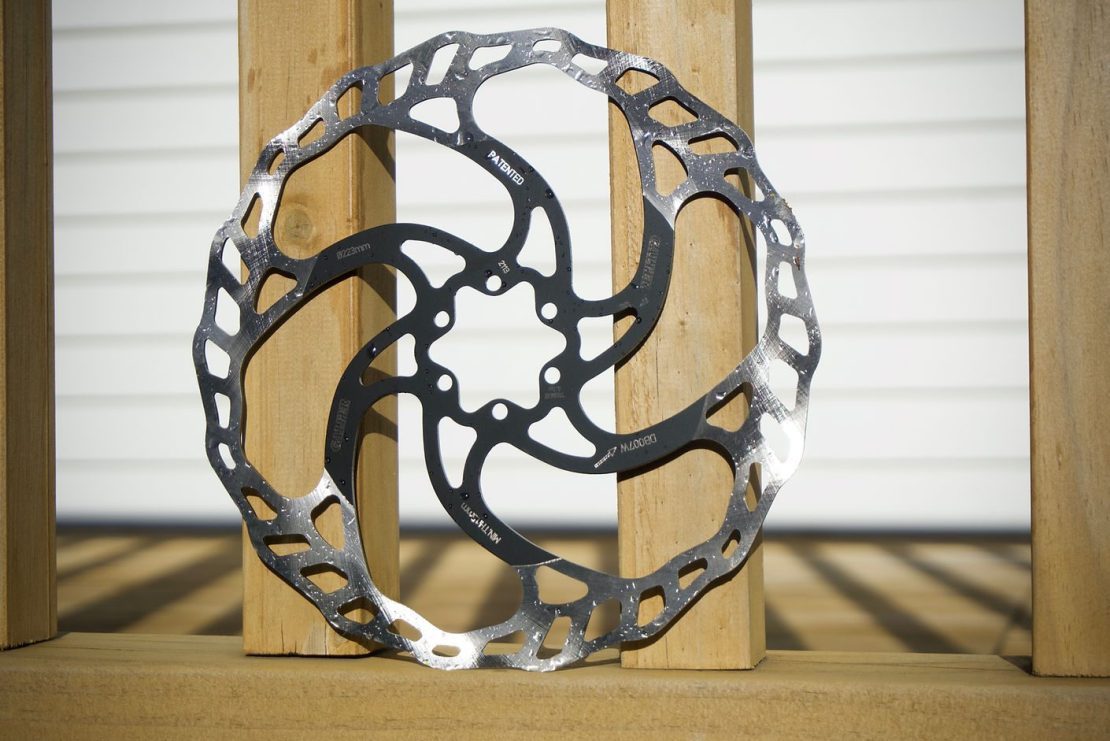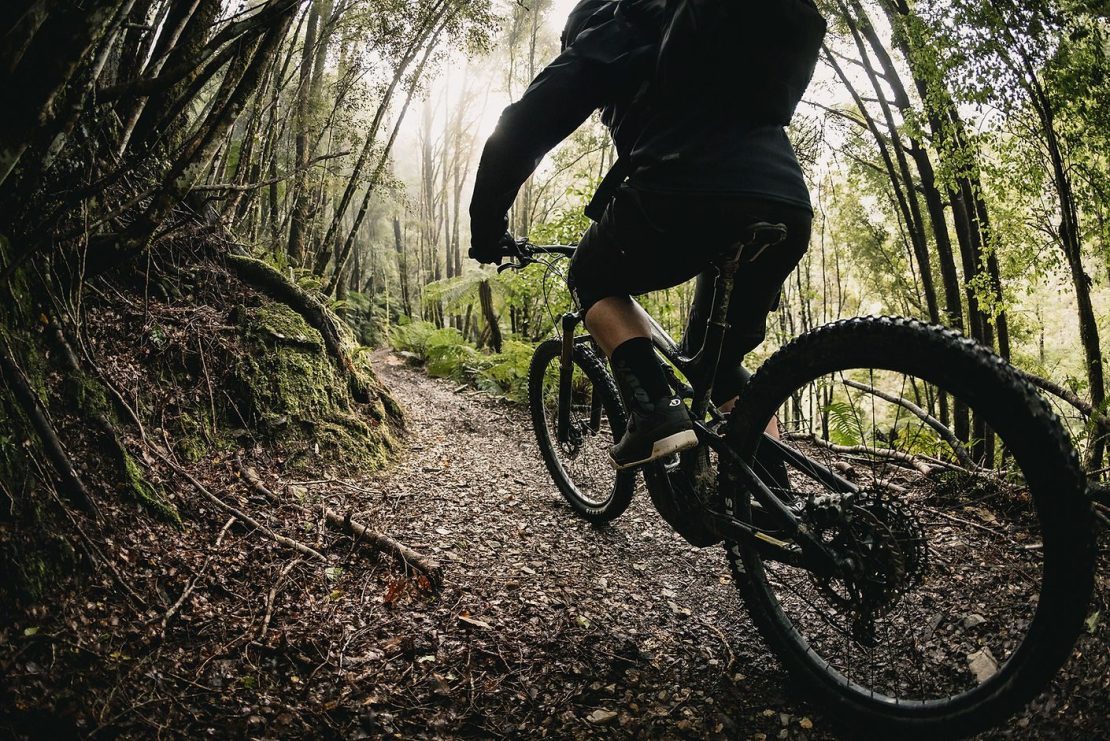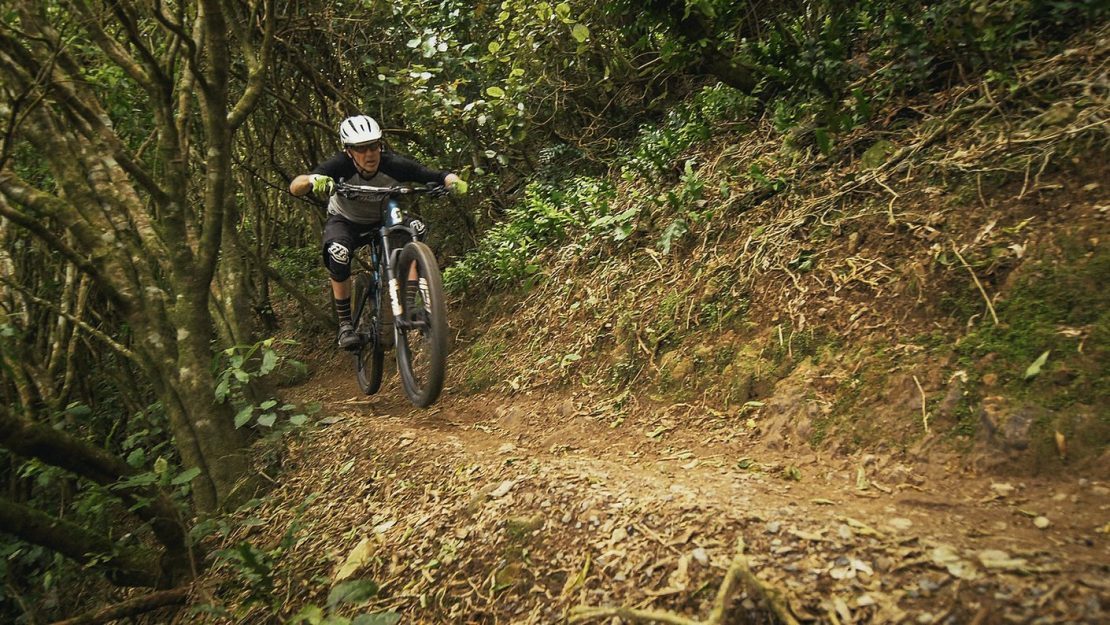Story: Life according to Justin Leov
Life happens at a million miles an hour for Justin Leov. In that respect, not a lot has changed since his days racing the World Cup downhill circuit. The day we meet, he bowls up to the airport pickup zone, chucks the window down, then leans out and asks if I’m Liam. I reply, ‘yep’, so he leaps out and gives me a stern handshake - you get a lot of these in the south. Justin hails from Blenheim, which is at the top of the South Island, New Zealand. We throw my bags in the back of his pickup and head to his digs.
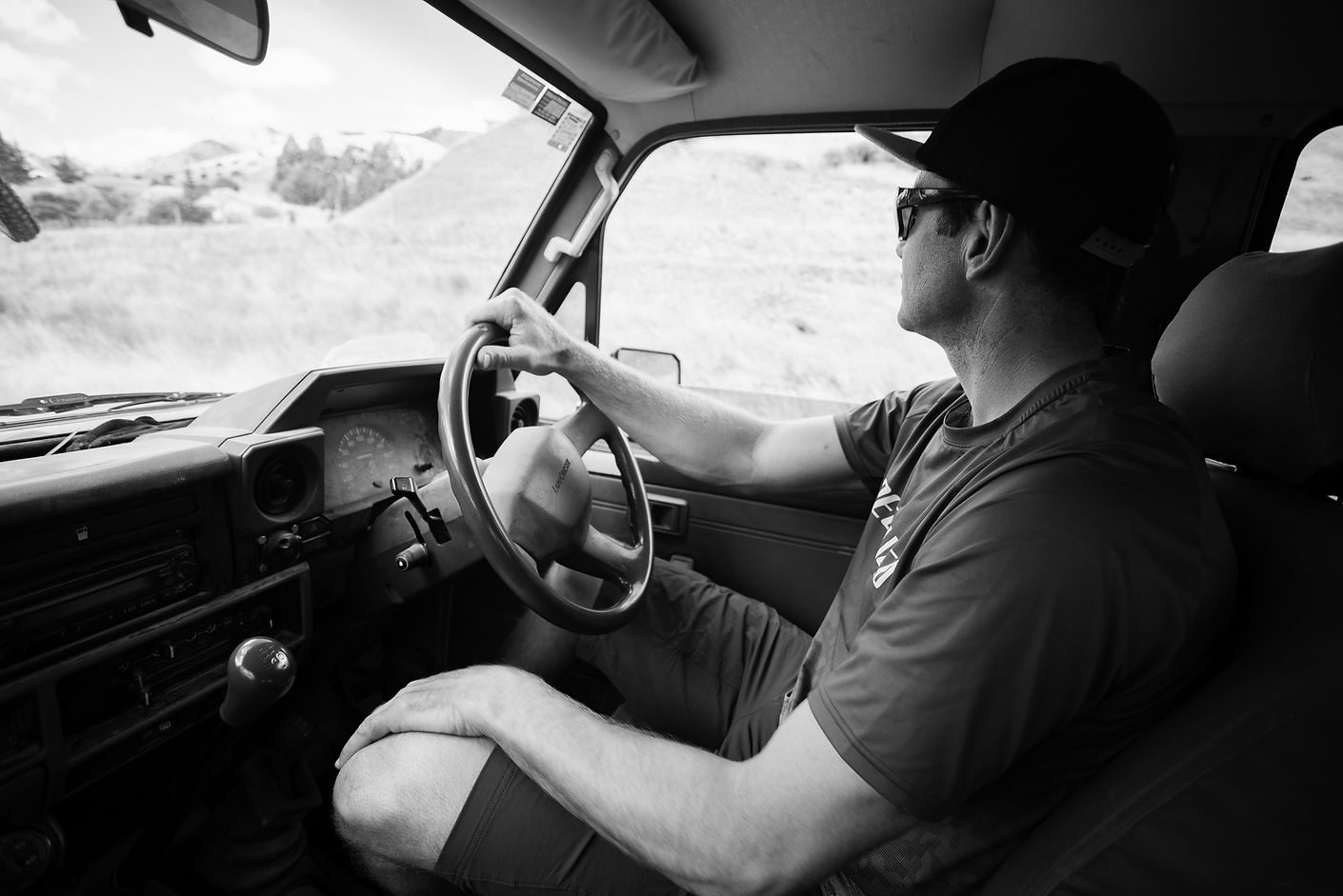
During this short ride, we cover most riding topics - and give the president of the local mountain bike club a call. I get the gist that Justin is always ‘on’ – his hustle is relentless. Our chat is mostly about bikes – and rightly so, as he’s made a bloody decent career out of racing them. But, more on that shortly. Justin’s stories, and his ability to relay them like they happened yesterday, is incredible. I scramble to take notes or record some of what he is saying, as we leap from topic to topic. Being in his company, you get a real sense of Justin’s energy and enthusiasm for the sport, and immediately I can see why he’s done so well.
After traversing some dry and dusty gravel roads, we pull into Justin’s property, Jentree. There’s a country-style house, a barn, a river, and a steep hill that sits behind the house. We jump out of the pickup in front of the barn, which is littered with property maintenance gear, bike paraphernalia and the old-school Land Cruiser he uses for shuttles up his hill. The race plates from his racing days are scattered all around and there’s even a wall dedicated to them. From Downhill, EWS and Crankworx, there’s either a race plate, medal, trophy or cheque (you know, those large, novelty ones). It’s evident Justin has excelled in his chosen sport, and I’m blown away by how much mountain biking history is encased within his barn.
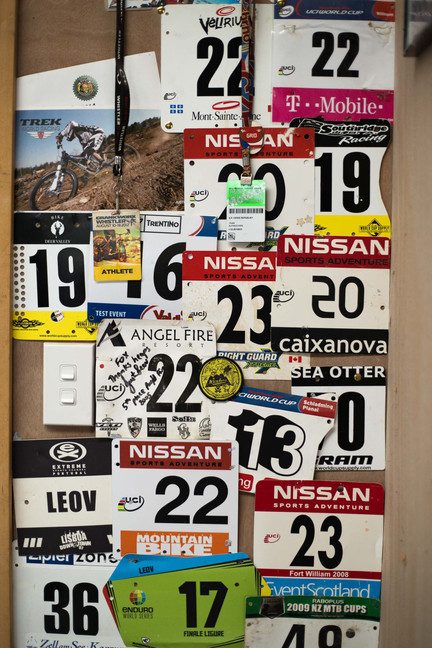
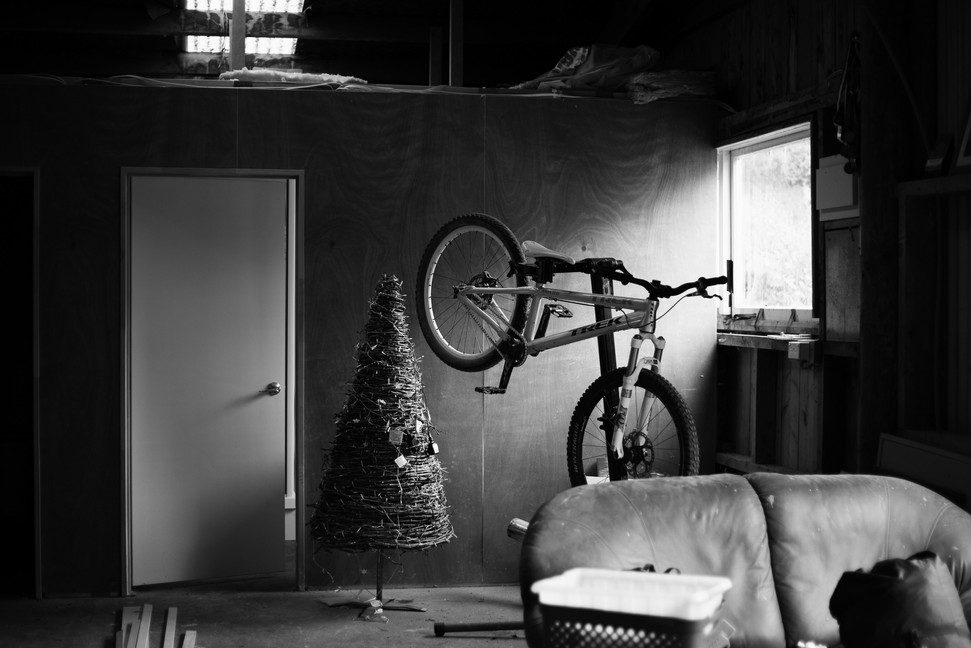
Justin is pro eMTB, and rides a Specialized Levo SL. Yes, he does have a pedal bike too, a Specialized Enduro, but these days most of his time is spent on the Levo SL. Justin reckons eMTBs have definitely established a place in the market. His Jentree property is straight up, so the Levo SL makes the climbs more fun and, when Justin gets home from his job as a builder, he can cut laps without anyone else having to shuttle him. What’s more, he can ride the descents swiftly, too. Of course, knowing a thing or two about racing downhill bikes helps, along with knowing trails on his property, but Justin explains that the Levo is much more planted on the trail, due to it being a little heavier. Put simply, it gets your centre of gravity a little lower.
“For me, the Levo SL is nearly the perfect bike,” Justin elaborates. “Being time limited with work, kids and trail maintenance, it simply means that when I can get out, I get twice as many laps in on the trails than when I’m on my regular bike. Being a lot lighter than the regular Levo, I find the dynamics while riding the Sl to be very similar to a regular bike (more playful and easier to manoeuvre). This, I believe, suits the rider who likes more technical trails and wants to ride with a feeling closer to their regular bike, yet also wants to get a whole heap more riding in for their time. I’d also like to add that my riding intensity doesn’t change, I still go flat out on the climbs like I have always done, it’s just that now I get there quicker.”
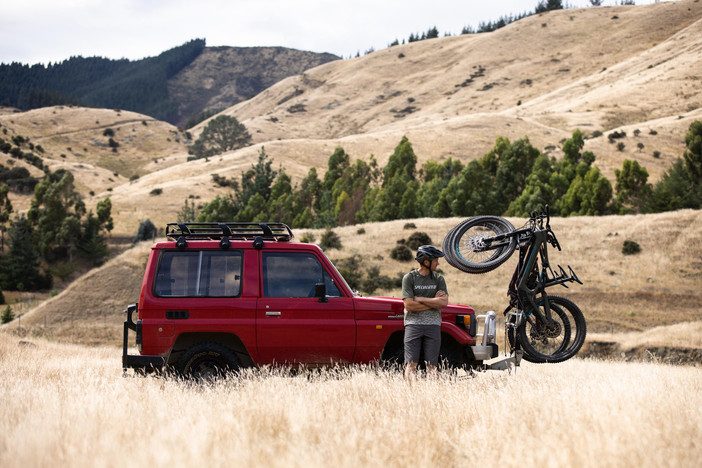
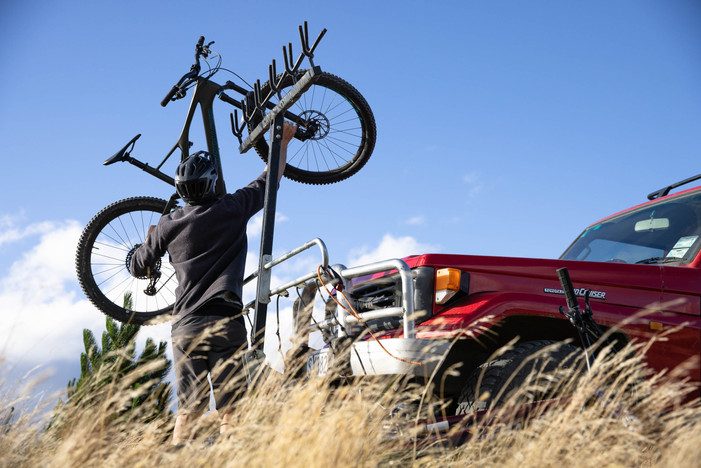
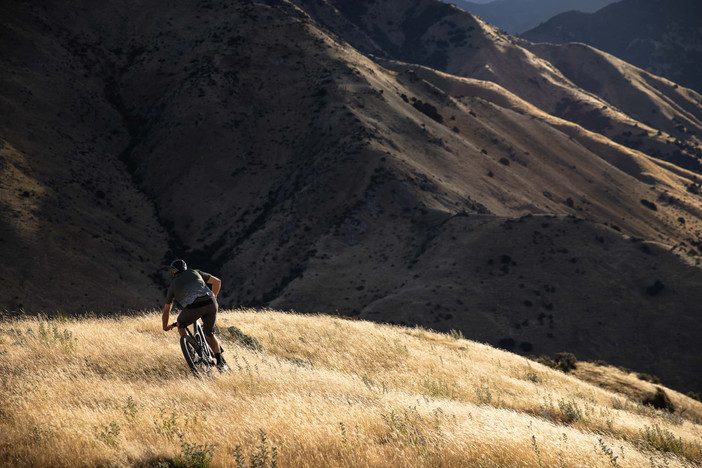
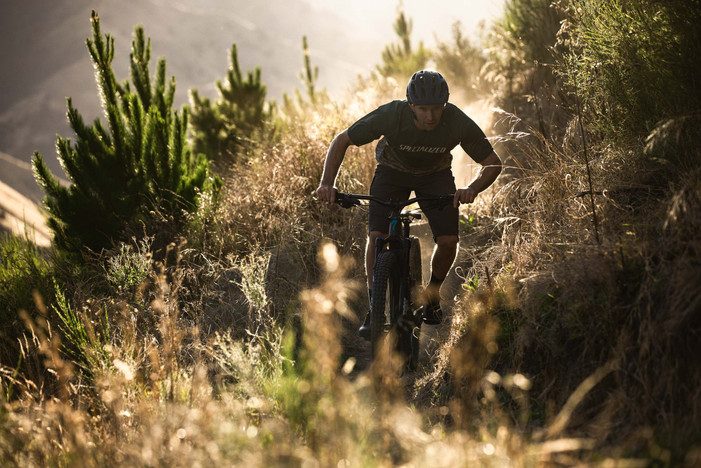
Justin spins some great yarns, but the conversation never wanders too far from his racing days. Of course, this is what I’m here to cover, but I could definitely spend more time just hanging out with him. He’s a top bloke who is also very humble, especially when you consider that his past is more decorated than most.
Let’s kick things off at the beginning, when he was first getting into riding, as a youngster. Mountain biking wasn’t on his radar initially; he was into motocross, but after some pretty heavy injuries, he moved away from it. It was at high school, Marlborough Boys College, where Justin was encouraged to give mountain biking a go. The youngsters would head out each Wednesday and explore the region’s trails and, on a few occasions, they headed to Jentree. There were a few groms who were keen riders, and they pushed each other – together, they headed off to races and events and started kicking ass.
Justin kept up the training and would ride from his place, across to Jentree (where he now lives), and cut laps until the evening light ran out. This was his daily routine: just getting his skills up and riding as much as he could. At 14, he entered his first Nationals on the West Coast. The hard, gnarly and technical track didn’t put him off and, after this race, he was hooked. As he started to race more, his skills improved and he took his first Junior National title at Jentree in the coming years. Oceania Champs followed, and soon Justin had hustled some businesses around Blenheim to support a trip to Europe: the good folk of the region backed him, and off he went. The plan was to hit the ground running with the World Champs and World Cup finals. Long travel and hectic schedules didn’t distract Justin at the World Champs in Kaprun, Austria, where he was 10th overall (racing as a junior) in his qualifying run, with a stacked field, and 20th in his race run. A week later, he was racing in Les Gets, France in the Open Men’s field (back then there wasn’t a junior class) throwing solid runs and placing well in the qualifier to eventually end up 40th in his race run. Justin returned home, but was yearning to head back again. The very next year, he did just that.

The plan was super loose, but Justin was determined to make it. Alpe d’Huez stands out for him that season, not only because he wore a skinsuit and placed 9th overall, but because he met Jason Marsh, a Kiwi living in Morzine who was hunting for different ways to do things (he would go on to work as Greg Minnaar’s mechanic and create MarshGuard fenders). At 17, Justin was still trying to work out what made him tick. Building anger before races was discovered by Marshy (Jason Marsh): he started annoying Justin before his run, and it worked. Being pissed off and getting aggressive before races made Justin ride harder. Justin recalls a time later on in his career, when he asked SRAM for a new derailleur and they wouldn’t help out. This fuelled his anger and was part of his process. “Everyone has their things, but learning this helped me early on. Also, work rate means a lot and you’ve got to have the want and desire. You’ve got to have the mongrel. Sometimes natural talent will be taken away by hard work,” Justin explains.
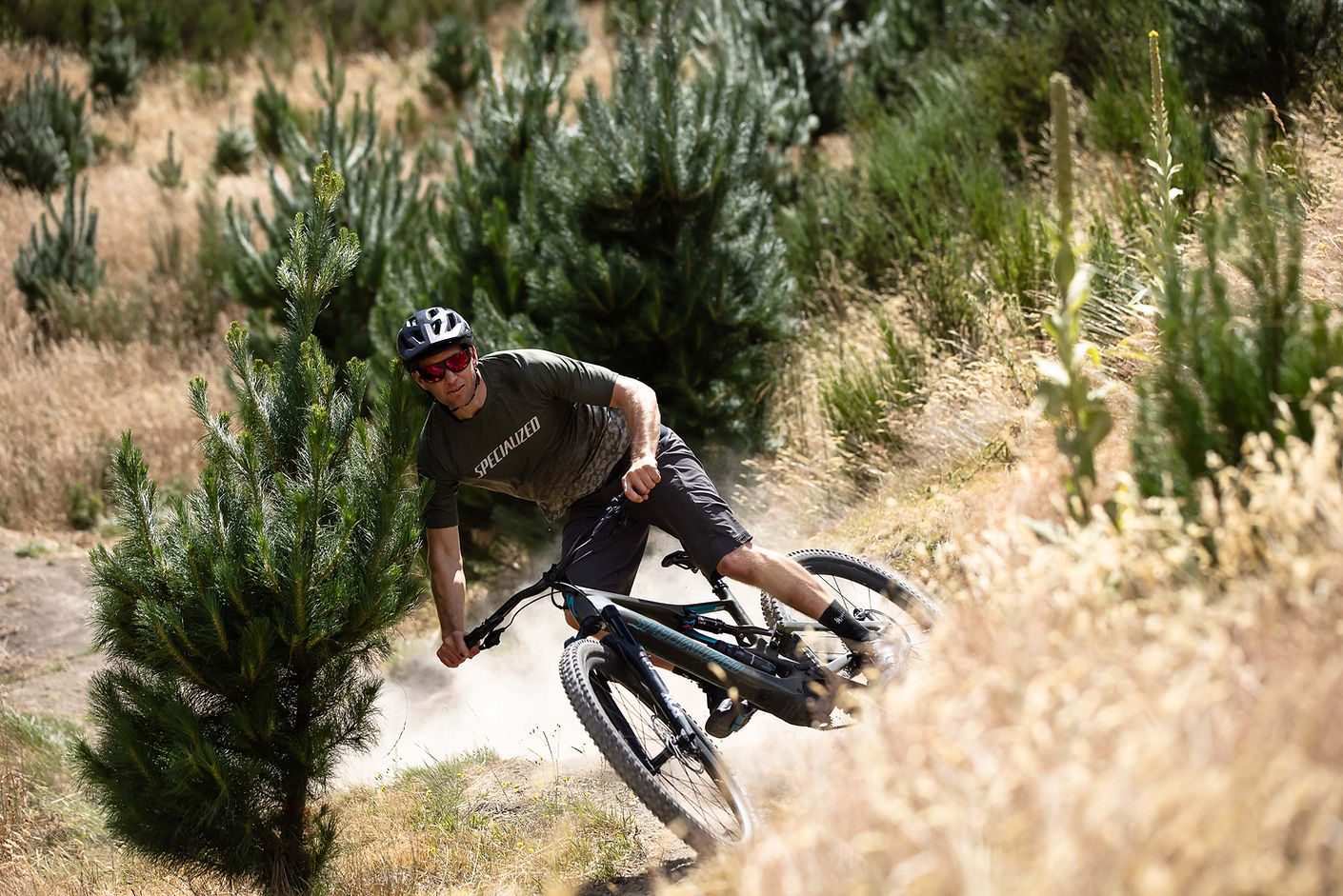
From showering in a bike wash, to sleeping in vans and doing just about whatever it took to get from race to race in Europe, built Justin’s character for the years to come. By 2005, he was riding for a small Swiss team, called the Suspension Centre Team, owned by Gery Peyer. It wasn’t a salaried position, but Gery gave Justin a place to stay as well as transport and a Turner to race on. This was the year Justin made himself known on the world stage, placing on the podium in USA and rounding out the year in 15th overall. After this, he started getting noticed, and signed with Martin Whiteley as a manager. Martin helped land a deal with Yeti for Justin’s 2006 season. The enthusiasm and stoke of making it was there but, unfortunately, it was short lived, with an injured shoulder during a 4X gate start in Spain, where he didn’t understand what the medical staff were saying. He punched on for the rest of the season before eventually getting surgery when he returned back home. The following seasons were much better and Justin snagged 10th overall finish in 2008. Martin then asked Justin to join a few team; Trek World Racing, with the likes of Tracy Moseley and Aaron Gwin. This was a well-oiled and organised programme. “You need to figure out what you need to do win – a lot of kiwis did well at home, but struggled with the stress abroad.”
After a few years riding at the highest level in downhill, Justin’s enthusiasm for it dwindled. The demands were high from constant training, intense races (with no room for error), hectic travel schedules and the stress of it all. He felt burnt out, threw in the towel and retired in 2012. Finished with racing, Justin returned home to start a building apprenticeship.
But, as it so often does, racing bikes soon lured him back in.
There was a new discipline on the scene: enduro. Justin was happy at home; he was completing his building apprenticeship and had been off the bike for a while, when Martin called and (eventually) convinced Justin to give this enduro racing a go. Relenting, Justin flew back abroad and, sure enough, finished 4th in his first race: that was enough to hook him. Shortly after that, Trek Factory Racing offered him a deal where he could race enduro and help out trackside with downhill rounds. It meant he’d be up at 5am training for himself, then helping out on the downhill racers, followed by a gym session in the evening. It’s not hard to imagine how this got a little too busy after a while, and Justin felt he couldn’t give it his all, so the following season he scaled back and focused solely on racing.
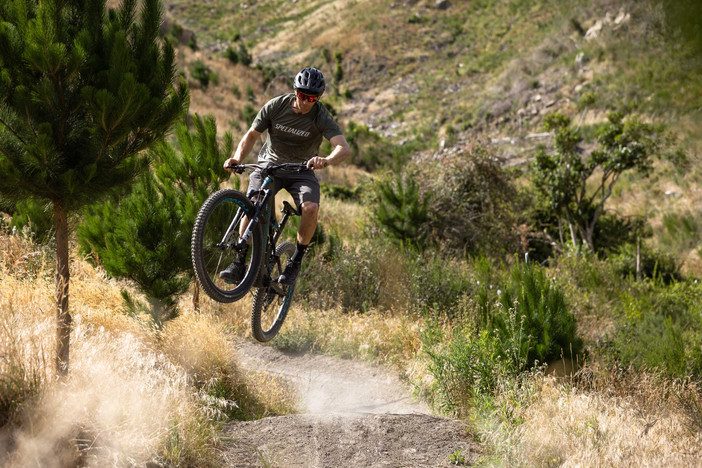
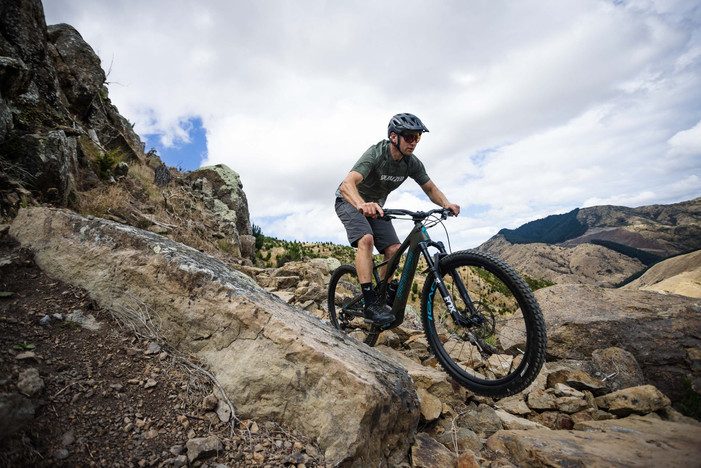
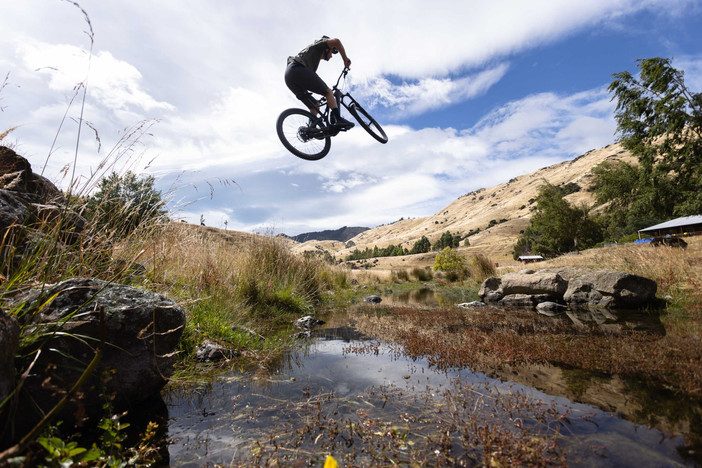
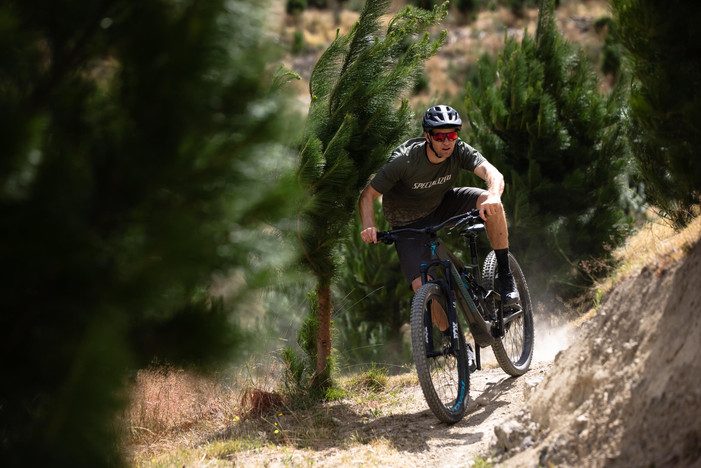
Justin says these were some of the best years of his racing career, on reflection. He had a great relationship racing with Tracy Moseley and there was great support with the team. The Trek engineers were also so invested in developing the best product for racing; they would use rider feedback as much as possible, and Justin and Tracy were behind the 29er movement before it was widely popular. They helped develop the Remedy 29er and the Slash 29er. And his racing? It was going really well, especially aboard the Remedy 29er - he took third overall in the 2014 EWS. That same year, Tracey won it. The next year, Justin’s focus was on taking the win. He won his first EWS round in Scotland and held the lead with the series but, luck wasn’t on his side when he crashed in Whistler, dislocating his shoulder.
There’s no doubt Trek were a massive part of Justin’s career, and it was hard for him to move away from the team. However, when you’re a sponsored athlete, the window of being able to earn highly is only open a short time. After some serious consideration, Justin signed with Canyon in 2016. Trek had the opportunity to match what Canyon offered, but couldn’t, and told Justin it was too good to turn down. He still had the mongrel and fight but, on the first Canyon training camp, he caught glandular fever. In order to fully recover he needed to return home and be off the bike - for at least six weeks. The first few weeks, Justin could barely make it off the couch, a concept which was not only hard physically, but mentally too. The next few years didn’t go his way, due to health reasons and Canyon not moving with the times in regards to having a 29er race bike option. The time came to retire, again, and head home to complete the building apprenticeship - Justin was fed up with the bike. “Reflecting on my career, everyone is driven differently. For me, I was focused on racing and missed most of the social occasions. You have to give it 100%. Find where you are – you can try and change yourself to fit a model, but you’ve got to see what’s best for you.”
Justin was back on the tools, building and living in Blenheim, when he caught wind that the Jentree property was for sale. This was enough to ignite his passion for riding bikes again. Justin, his wife Victoria and their two kids, Annabella and Luca, moved in.
“Jentree got its name from the previous owners, John and Jenny Meek. John was referred to as ‘Track Man John’, and was the creator of the cross country course. When Victoria and I bought it off them, we decided to keep the name as a tribute to John and Jenny’s hard work. The original cross country was, at the time, more technical than most other courses, so it developed that reputation. My first ever mountain bike race was an XC here, and it had a climb so steep you had to shoulder your bike and climb up it by foot. It was so cool to see something like that in a course, you don’t really see that often anymore. John loved naming sections and locations; the DH was called The Mangler, true to its name it also delivered. Digger-built trail didn’t really exist at this time, so the closest we had was my dad pushing a few cuts in the hill with a bulldozer. These would be named “Leov Lane”, and the pond at the top of the hill was also built by my old man and named Gladys’ Pond - after John’s mother. There were definitely a few degrees of connection to this property for me, and being able to purchase it from John and Jenny really brought it back full circle.”
The place needed a bit of work, and the trails had been left for years, but Justin just chipped away on things at a slower pace. Justin takes pride in the property, and the Jentree trails are unique. It’s clear to see that there’s plenty on for Justin these days, but he gives me ample amounts of his time. Heck, we even stop at one point when we’re shuttling the trails so he can offer me some skills coaching. Yep, he coaches mountain bike skills too – well, there’s not much he doesn’t do! The tips he gave me have made my riding a whole lot better, and I’ll be giving him a call again for sure.
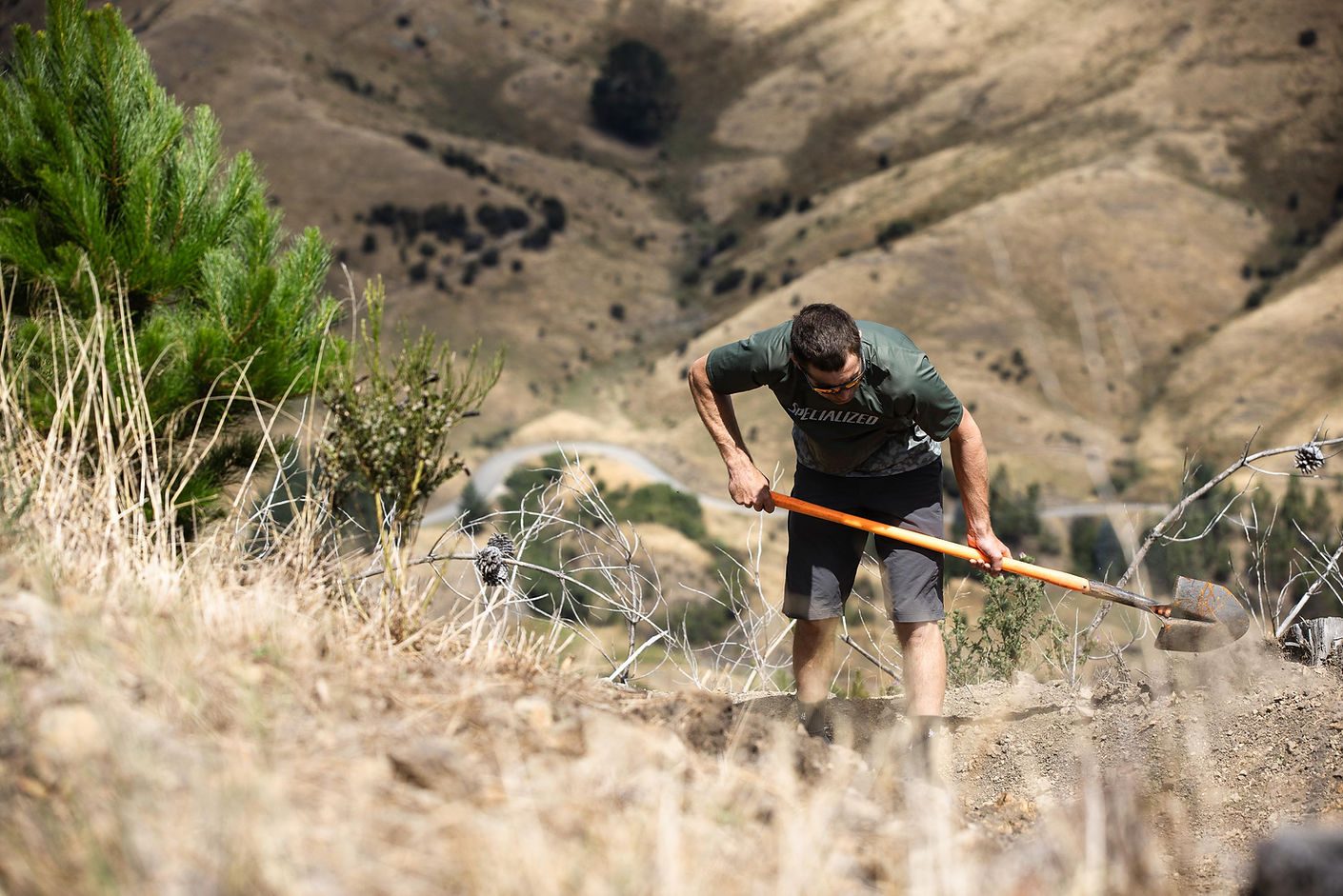
Justin’s wife, Victoria, welcomes me into their family home and I quickly learn that she’s his most dedicated supporter and has been by his side throughout his whole career. It’s clear to see that Justin’s performance at the highest level has been backed by Victoria holding things down on the home front and, importantly, keeping things balanced. Of course, there’s been some rocky moments, but Justin says they’ve learnt over the years: it’s not easy when you’re pro, often miles from home, focusing on riding bikes - sometimes there’s not much room for anything else. For Justin and Victoria, years of phone calls progressed to Skype calls and seeing how best to work a long distance relationship.
It takes one hell of a driven person to pursue a sports career at the highest level and, without doubt, Justin is one of them. But, his humbleness remains, even after being one of our most decorated mountain bike riders. It’s clear to see the lessons learnt from racing abroad are applied to many aspects of his current life. His support network is solid and his passion for the sport, and giving back to the next generation, is what stands out.
Words: Liam Friary
Images: Henry Jaine
News: Reece Wilson's 2021 World Champs Trek Session
+World Championships is a special time, the one time a year when riders swap team colors for flying national pride on their backs. Custom-painted helmets and bikes celebrate culture and ancestry. Normal rules no longer apply.
Part of the tradition is the bike build – a ritual almost always held the week of the big race, as if to keep the rider in suspense, but almost certainly to keep the bike clean before hitting the track.
There’s a special energy surrounding these buildouts, with the mechanics applying the pinnacle of their care and attention to a bike that may only tackle a handful of downhill runs. Applying the perfect amount of grease where necessary (removing it in others), knowing the subtle difference a millimeter here or there can make, and jeweling it with anodized titanium bolts. This is their craft. Combined with the art of the painters, you have a steed as unique as the rider who will hopefully be inspired by the extra boost of confidence such a bike can bring.
Reece Wilson is the reigning DH World Champion, and while he won’t be wearing the rainbow stripes when the clock starts ticking, he has roughly four minutes to earn the right to put them back on. Reece will be racing aboard his custom white chroma Session that his mechanic Joe Krejbich and Trek Factory Racing have meticulously assembled. His build features a SRAM X01 DH drivetrain, SRAM Code RSC brakes with 220mm rotors front to back, and RockShox BlackBox suspension to tame Val di Sole’s notorious course. A Bontrager wheelset, and Title cockpit round out the bike built for a King."
Review: Funn Funndamental Flat Pedals
The FUNN Funndamental pedals are a 6061 alloy flat pedal, featuring 11 replaceable pins per side, a GRS grease port, and a nice big platform. There come with long and short pins and a couple of little tools to remove/fit them as, out of the box, no pins are installed, allowing you to place as few or as many as you like in different patterns. They feel pretty flat underfoot, and are possibly less concave than the BlackKats I usually run, and feel very solid.
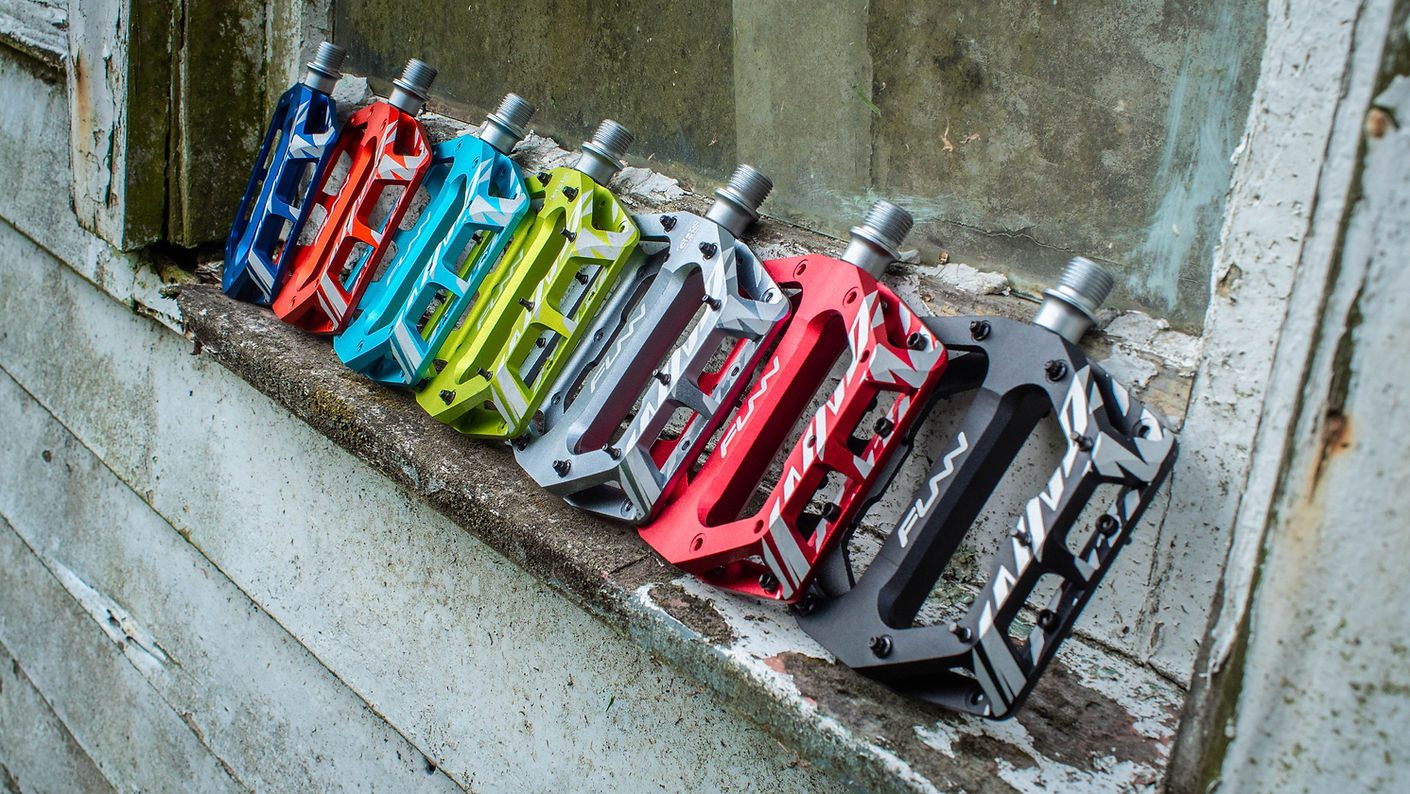
Pros:
The pins are needle sharp which gives a heap of grip, but will probably open my shins up next time I muck up a crank flip. The nifty grease port is a good idea, and the pedals run nice and smooth right out of the box on a cartridge bearing and DU bushing. I haven’t used the port yet, but it looks like an easy way to maintain the pedals without rebuilding.
These are a tough looking pedal and, so far, have handled pedal strikes well, with no scuffing or bent pins. There is a feeling of less foot fatigue compared to the BlackKats; I didn’t have to try grip my feet on as hard and they stayed put wherever I placed them over rough terrain, while allowing fine tuning of my shoe position with a gentle lift and slide technique.
The choice of seven colours is cool, especially if you're into matching every component on your bike - or contrasting them. I tested the silver ones, so can’t speak for how well the anodising stays on after smashing rocks - yet.

Cons: It’s a hassle to put the pins in yourself (seeing as no one will ever run them without pins) but it does allow personal tuning and set-up, so that could also be seen as a ‘pro’. You decide, while you're screwing the pins in!
There are no spare pins included, but they are supplied with long and short pins, washers and tools.
The less pointy outer pins are kinda pointless (pun intended) as they don’t really grip at all. It would have been cool for them to still have a sharp end. Overall, I prefer the Funndamentals to my regular pedals, and they will be staying on my bike. They feel like a solid, modern pedal yet offer nothing extreme or ground-breaking - which can be a good thing for a component that needs to do one job and do it well. At $170 retail, I would consider them fundamentally good value as well.
Words and Images: Finn Lloyd
News: Canyon send a message of unity to the MTB Community
From 25-29 August, the attention of the entire mountain biking world will be drawn towards two events. The UCI World Championships in Val di Sole, Italy, where the world’s best riders put everything on the line for their shot at the rainbow stripes in cross-country, downhill, short track, four-cross and e-MTB. Alongside this, for the freeride athletes, Audi Nines in Germany marks one of the biggest spectacles of the year. Normally this would be an occasion to light up the bikes of our CLLCTV pros, with special artwork in the riders‘ national colours, or wild designs to stand out from the crowd.
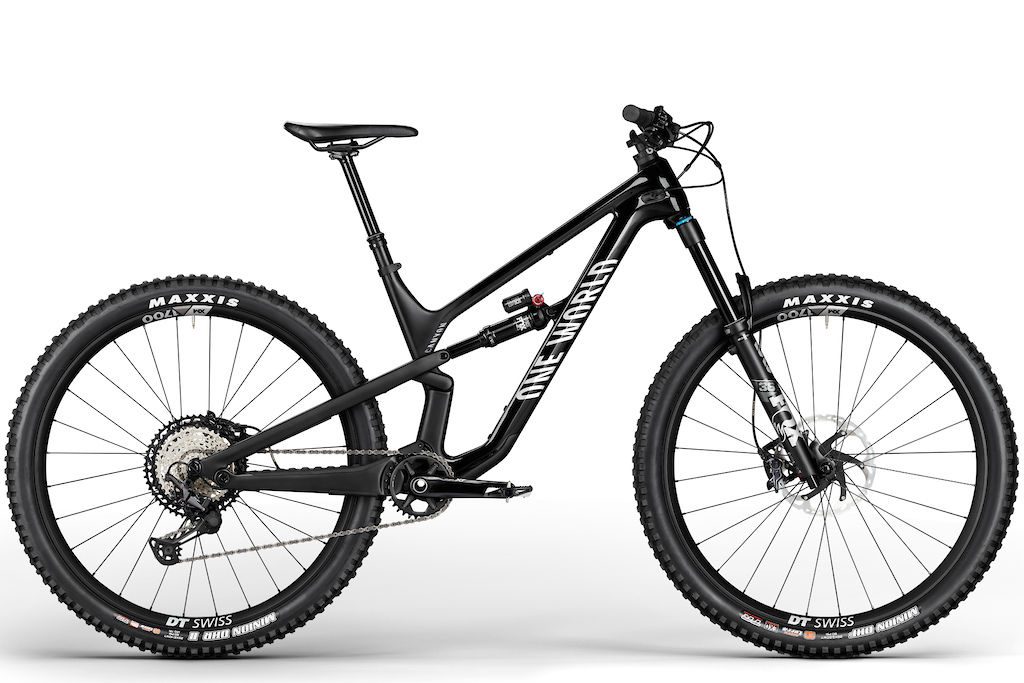
But this time round, Canyon are doing things a little differently. To make an important statement: for unity, for the global riding community, for the sport. By marking the bike of every CLLCTV athlete with the same message, proudly displayed on the down tube. ONE WORLD. A positive message, inspired by a positive idea. That we’re all here on this planet together, and we’re all part of the same awesome global cycling community. Especially in our modern world, unity and solidarity are more important than ever. Canyon’s aim is clear: to inspire mountain bikers worldwide to grow, progress, and preserve the sport we love for every and any cyclist. Together we are part of One World, and part of One Collective.
Trail, XC, downhill or dirt jump – it doesn’t matter what you ride. All styles and all riders add something special to the mountain biking landscape, every day. And everyone can be part of our unique MTB community: a community based on friendship, support, inspiration and mutual respect. We are all together.
To underline this moment, Canyon are calling on the MTB community to join them in making a difference. How? By supporting the amazing work being done by World Bicycle Relief, an organisation committed to helping more people across the planet gain access to bicycles, and the countless opportunities they present. It’s the worthiest of worthy causes – and the organisation are fully behind Canyon’s initiative too. Allison Dufosee, CEO of World Bicycle Relief UK, states: "We are delighted by this innovative activation by Canyon. The donations we receive will allow us to fund the delivery of many Buffalo Bicycles to mobilise communities and to enable access to education across rural areas of the world. This is a significant opportunity for raising awareness of our mission and the Power of Bicycles."
Every donation made through our fundraising page also give you the chance of winning an exclusive Spectral CF 29 with the same Canyon ‘One World’ artwork as our athletes’ bikes.
You can find more information about the One world – One CLLCTV activity at canyon.com. Or check out the phenomenal work being done by World Bicycle Relief here.
Story: A Decade Dedicated to Women
Even the strongest native New Zealand tree needs a supportive environment to flourish at the start, and many burgeoning women mountain bikers are no different. Creating this type of environment was the incentive behind Revolve, a “down to earth” women’s cycling club that caters to women of all skill levels, who want to ride a bike!
Founded in 2009, Revolve was the brainchild of two local bike enthusiasts – Ash Peters and Marjolein (MJ) Cook – who found there was a severe lack of women riding the trails and racing in local events. With a little prompting from supportive local bike shop owner Nigel Welch, they decided to do something about it. “What started as a casual weekly ride quickly grew and, as more and more ladies started to turn up, we thought… maybe we’re onto something,” says Ash.
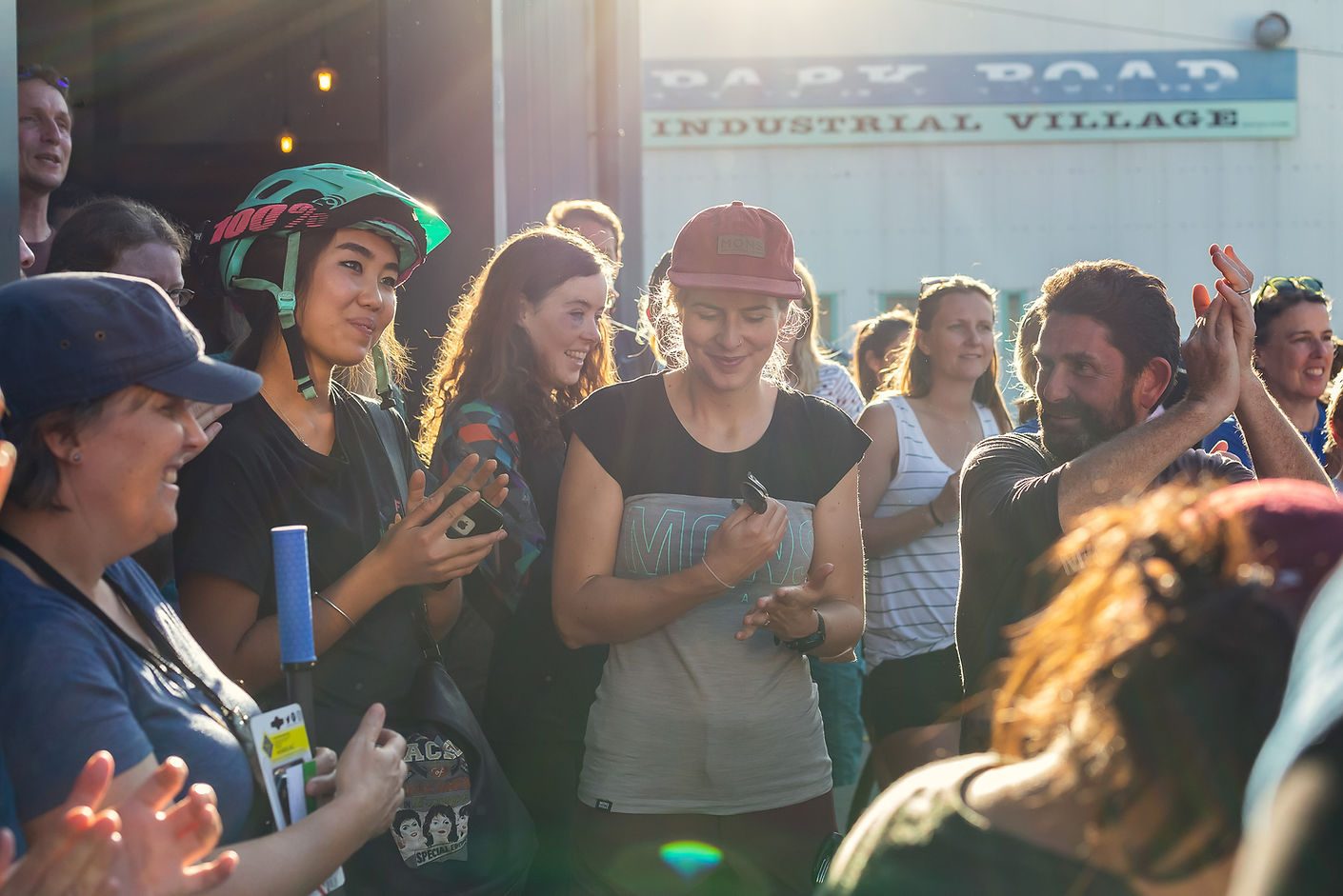
With the simple mission to get more women on bikes – be it mountain or road – Revolve’s popularity grew quickly and captured the hearts of many – both guys and girls. By 2012, over 1000 people had signed up for the ‘Weekly Revolver’ e-newsletters to stay in the loop with the weekly rides, events, and skills and maintenance clinics.
“Given the response and commitment we received fairly quickly, it was hard to believe there wasn’t a club before,” says Ash. “They say ‘build it and they will come’ and, with Revolve’s inception, I’ve had countless women reiterate this saying – whether they were too nervous, unacquainted with the trails or not keen to ride with their partners, these women were looking for an outlet and, through Revolve, found a club to call their own.”
Fast forward ten years and Revolve is much more than a two-woman band – the committee of nine, headed by co-presidents Meagan Robertson and Abbie Bull, continues to be the driving force behind a club that remains committed to empowering the women of Wellington, and ideally beyond, through their love of cycling.
Keeping the wheels turning
Over the years, Revolve has provided its members with a wide variety of activities and benefits; bike maintenance classes, women-only events, trips away, subsidised skills courses, quiz nights, shuttle days, and more. While the options vary and evolve from year to year and committee to committee, one core offering has remained constant since Revolve’s inception in 2009: its guided weekly road and mountain bike rides.
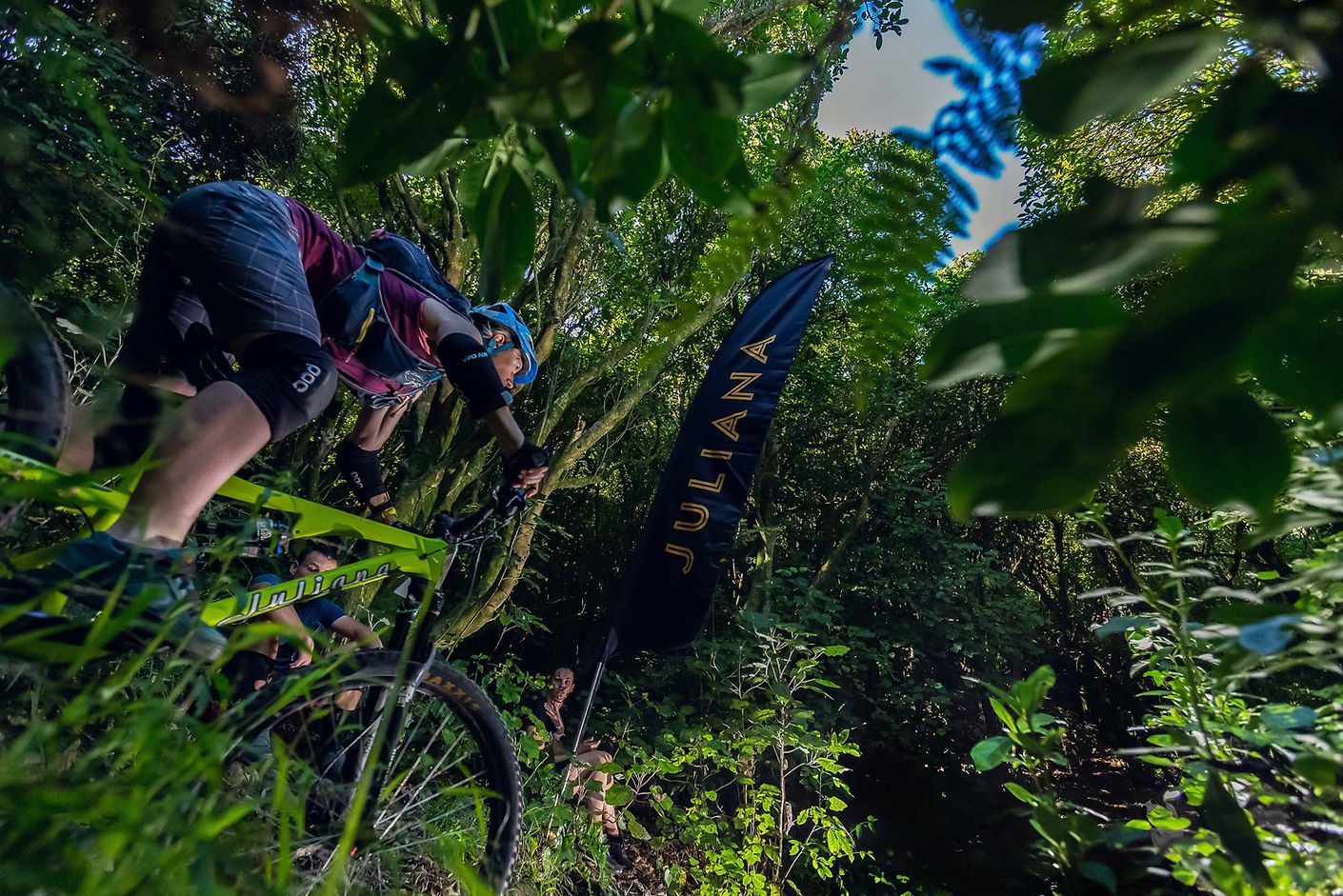
“No matter what else is going on, be it event preparation, first aid course organisation or injured Ride Guides, Revolve Ride Guides always pull together to ensure consistency through its ride schedule,” says Dee Skilton, who has been on the committee as a Ride Guide coordinator and Trails Liaison for the past four years.
With road rides every Saturday morning, and mountain bikes rides every Thursday evening (every second week in winter), Revolve members always have something to look forward to. Ride Guides also organise additional rides beyond the weekly offering, such as the Weekend Excursions led by Ride Guide Nicole Hoy and the Wainui Weekend Rides led by Dee, which draw good crowds and have become much-anticipated calendar staples.
“If our rides are our constant, it’s drawn from the strength of our Ride Guides, and a key part of Revolve is ensuring we have enough Ride Guides who are trained and passionate about our mission. They are the face of Revolve, and the ones who influence whether those who turn up for rides end up coming back – it’s a big responsibility!”

To ensure the Ride Guides feel confident and are well prepared to lead rides, Revolve organises and funds Ride Guide training, first aid training and skills courses, as well as bi-annual get togethers and an appropriate thank you at the AGM.
For many of the Ride Guides, like Weekend Excursion extraordinaire Nicole Hoy, it’s a way to give back to a club they feel passionately about. “Nine years ago I found Revolve. I loved riding a bicycle and wanted to become a more confident mountain biker. Ashley and MJ were amazingly patient with riders like myself, and their love of mountain biking was infectious. My confidence grew, as did my list of bike riding women friends. I've met some of my dearest friends through Revolve and am eternally thankful for that. It’s a big part of why I continue to Ride Guide – I want to support this unique and welcoming community of riders.”
More than just riding
While Revolve’s initial goal was to get women on bikes, the lack of women riding was particularly obvious at the start line of an event, so building women’s confidence in attending events became another club aim early on.
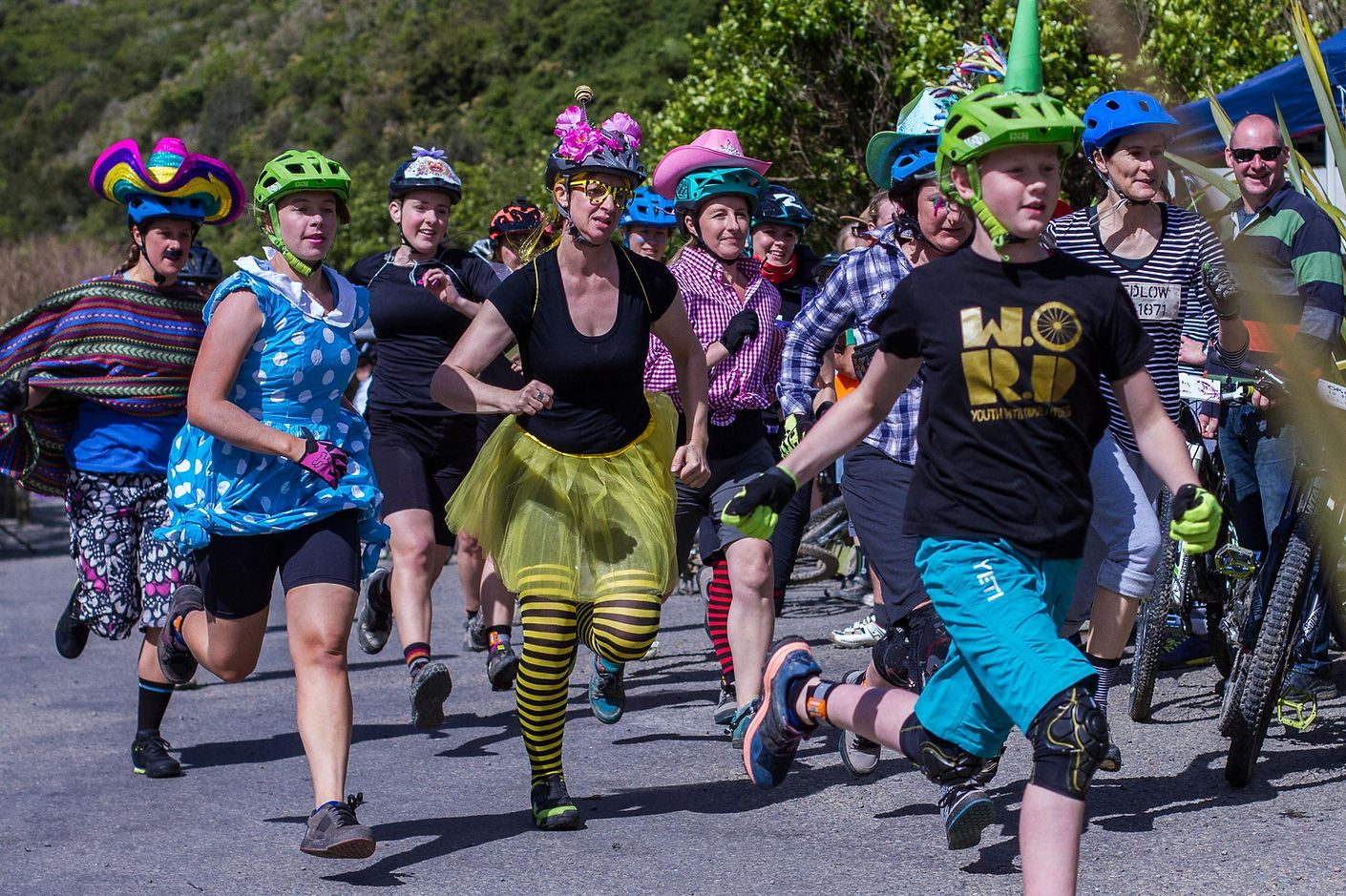
Women of Dirt was the club’s first event and has arguably become its most notorious. Designed as an inclusive and fun six-hour relay – complete with baking and best dressed prizes – the aim is to encourage women to try their hand at racing in a comfortable atmosphere. “It reiterates our mission, which is to build confidence in women of all abilities and skill levels through their enjoyment of riding,” says co-president Abbie. “Women of Dirt is unique in that it encompasses an awesome blend of fun and competition. With girls aged seven through to women in their late fifties – some that have ridden a handful of times and others that ride several times per week – it proves an opportunity to get together, ride bikes and meet like-minded people.”
With the ninth Women of Dirt event plan underway, co-president Meagan – who took part for the first time in 2011 – says it’s been incredible to see the event grow over the past eight years. “On my first-ever Revolve ride, myself and another newbie – now one of my closest friends – were talked into putting together a team for Women of Dirt. It was such an amazing way to find out what Revolve was all about – the people were friendly, the biking was fun and the atmosphere was almost electric.
“For the next few years, I rode and helped organise with more new friends, and since taking on the president role four years ago, I’ve been mostly organising – but always taking time for a lap or two!”
The event, which took place at Makara Peak for the first five years, became so popular that the committee decided to move it around to help give women exposure to trails further afield – in 2017, it was held at Wainui Trail Park and last year at Belmont Regional Park.

Meagan says the decision hasn’t come without its own challenges. “It’s already challenging to convince women to take part in an event at all, even when it’s on home turf, which is Makara for a lot of people. Convincing them to give new trails a go takes a lot of encouragement, and a lot of pre-rides.” Looking to cater for a wider variety of riding abilities, and expose women to a different racing format, the Super V was born in 2012. Held at Polhill Reserve, the pedally downhill race gives women a chance to get shuttled to the top of stunning singletrack that can rarely be ridden at speed due to its dual-use status and popularity.
“It’s similar to Women of Dirt in that the environment is incredibly supportive and friendly, plus you get time to chat to the other women on the way up in the shuttle. It feels a bit more like a race though because you start one by one, and you don’t want to let people pass you,” says Tina Frew, who was convinced to join in after only a few weeks in Wellington, and has participated every year since.
Both events are organised wholly by the committee, who continue to refine the processes around them.
“Where we see areas for possible improvement, we make a change,” says Meagan. “Over the past four years, our focus has been on ensuring volunteers feel valued, sponsors feel appreciated and the atmosphere at the race is welcoming and fun. It’s a massive job organising these events, and we’re lucky to have such an incredible committee, and race day volunteers, making it happen.”
Friends of Revolve
In addition to its two staple events, the Revolve committee also organises a Christmas party, an AGM and an AGM Shuttle Day for Ride Guides; members and volunteers, and Friends of Revolve are welcome at all three events.
“While Revolve is all about empowering women, it wouldn’t be as successful as it has been without support from those outside the club, who we call Friends of Revolve,” says Abbie, whose membership research led the club to introduce an actual Friends of Revolve membership earlier this year.
“Every committee member and Ride Guide has people in their life who supports their volunteering, and many of our event volunteers are men who support Revolve’s mission. It’s so close to our hearts that we acknowledge a Man Friend of the Year at every Christmas party.”
Why women only?
Much like the hashtag #ifyoucanseeityoucanbeit, Revolve caters for all women, particularly those who are nervous about “not being good enough”. In any given week, Revolve receives a handful of emails from women wondering if they are “good enough” to join a ride and, nine times out of ten, said women are more than capable of joining the ride they’re enquiring about.
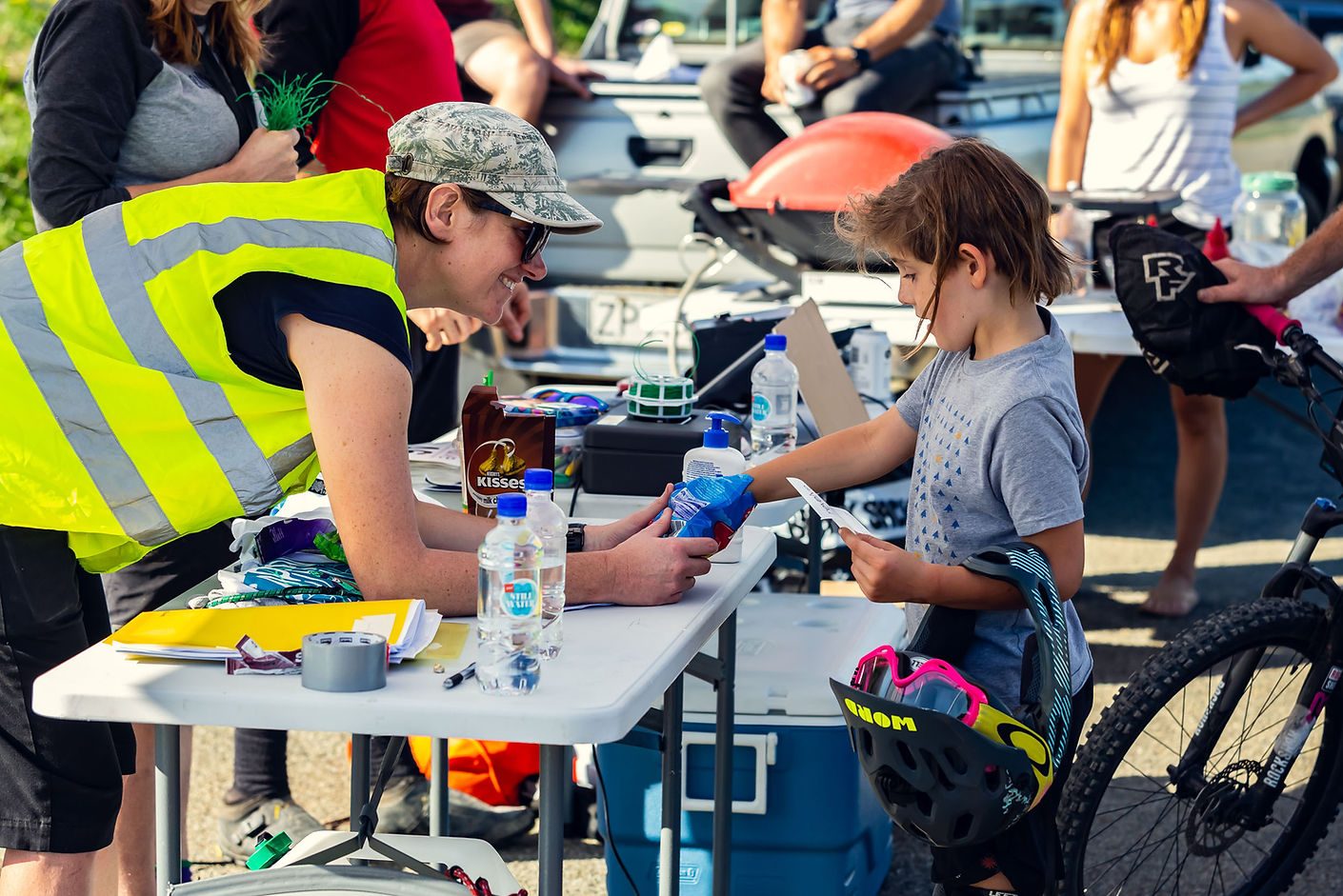
Committee member Sarah Murray, who has now been the Roadie Ride Co-coordinator for the past three years, admits Revolve’s ‘no one left behind’ policy was a major drawcard for her. Two Coast to Coasts, an Ironman and few half Ironmans later, she recalls her nervousness vividly.
“I joined Revolve to learn how to ride a road bike and meet some new people. I looked around at quite a few riding groups but was pretty intimidated by the sound of most of them, while Revolve seemed so welcoming and forgiving of out-of-their depth rookies like me. My first ride was led by Leonie and despite the fact we had to stop half way up the hill to pump up my tyres (I didn't know you needed more than 40psi in them....) she was so friendly and encouraging - after that I was hooked!”
Words: Meagan Robertson
Images: Dan Sharpe
Release: The all-new Canyon Lux Trail CF
LIGHT. FAST. CAPABLE.
Those three words say it all. The new Lux Trail takes everything that is great about the Lux — the lightweight chassis, the unreal speed and unrivalled pedalling efficiency — and adds a serious dose of capability courtesy of its downhill-friendly geometry, longer travel (120 mm) fork, dropper post, wider bars, and meatier tires.
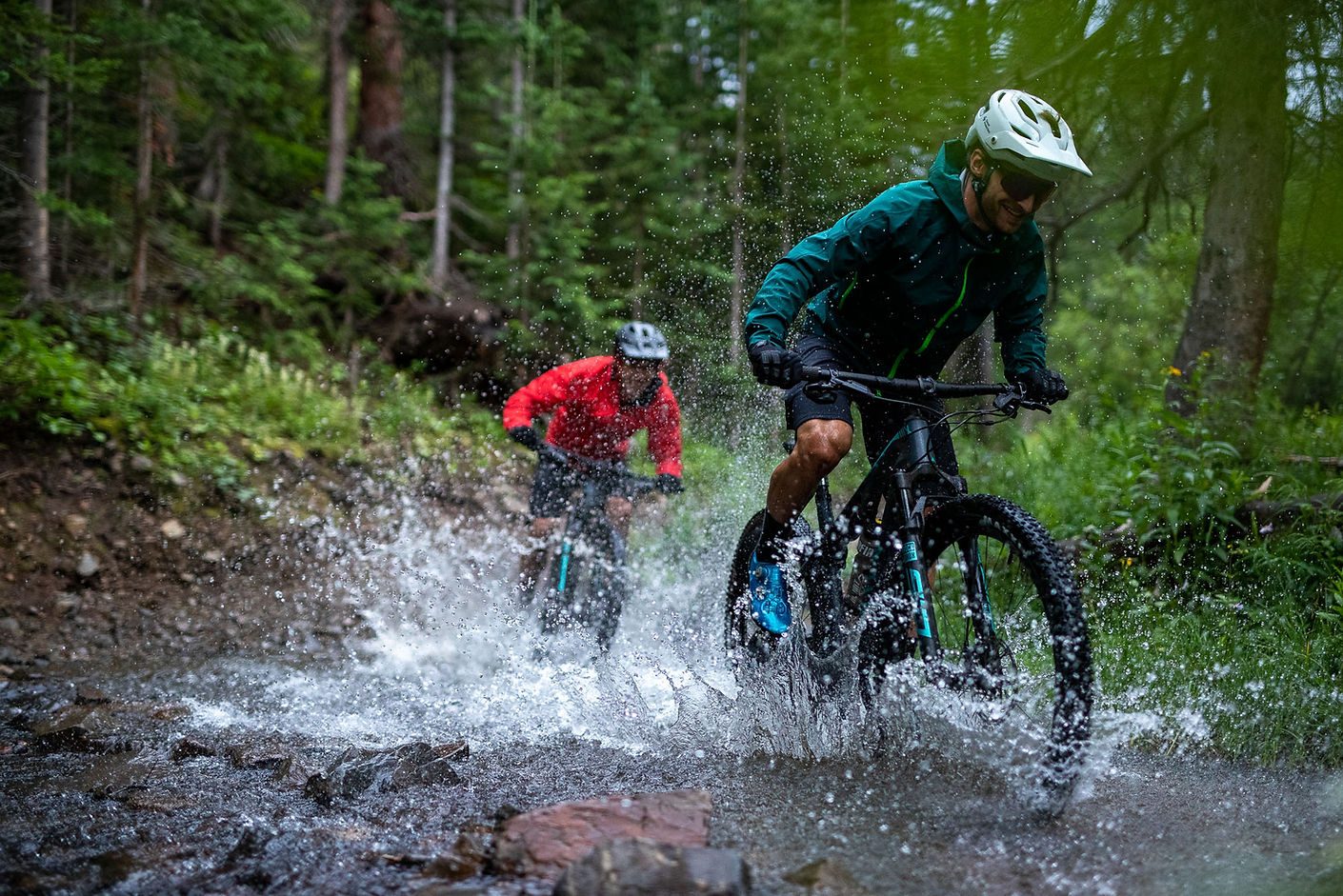
A NEW FLAVOR OF FAST
Why a new, additional flavor of Lux? Because there is more than one way to ride cross-country. Once upon a time, cross-country meant just one thing — going as fast as possible, between the tape. All XC bikes were fast, ultralight, short-track rockets. But cross-country has evolved. Yes, riders still want a fast, light, race-tuned bike that covers ground as quickly as possible…but they might never toe the starting line at a traditional race. They’re looking, instead, for the perfect whip to help them cover as much trail as fast as possible. Or perhaps these same riders are still racing, but now they are competing in longer, more technically challenging events — such as the BC Bike Race. These riders still need a race weapon, but these kinds of competitions call for a less twitchy, more confident, and forgiving speed machine better suited to long days in the saddle. Enter the new Lux Trail.
THE UNSTOPPABLE CLIMBER…
The Lux Trail inherits the same core kinematics and anti-squat values that have made the Lux a World Cup-dominating, climb devouring, rocket launcher of a race bike. The Lux Trail possesses the perfect balance of traction-enhancing suspension and pogo-cancelling anti-squat. Riders are looking to ride as far and fast as possible. The incredibly efficient Lux Trail fits the bill perfectly.

THAT DESCENDS LIKE A BAT OUT OF HELL
What goes up, must come down. The Lux Trail not only gets you to the top of the climb first, it also gets you to the bottom of the mountain before everybody else. The bike’s geometry plays a big role here, increasing your control on steep and fast descents. A slack 67.5-degree head angle lends the bike a calm feel at the controls when you are barreling down steep trails and the combination of long reach (480 mm on a size Large), short stem, and wide bars help you feel centered and stable on the Lux Trail.
LIGHTWEIGHT AND DEPENDABLE
It’s one thing to create a lightweight bike. It’s a much harder thing to create a lightweight bike that’s reliable. But that’s precisely what we’ve done with the Lux Trail. Why does that matter? Because no one is fast when they are sitting on the side of the trail with a broken bike.
Let’s cut to the chase on the question of weight. At 1,905 grams (size Medium), the Lux Trail frame boasts one of the lightest frames on the market— which is remarkable when you consider that the bike meets the same Category 3 testing standards as trail bikes, such as our popular Neuron.
We shaved every unnecessary gram. Utilizing the same rear triangle as our current Lux, the Lux Trail eschews chainstay pivots for a carbon flex pivot. Taking the rear pivot assembly and bearings out of the equation reduces the weight of the overall system without making any sacrifices to the suspension’s performance.
The Lux Trail’s kinematics are designed to exert minimal stress on the bearings and pivots, allowing us to equip the Lux Trail with an ultralight rocker assembly without sacrificing durability. The Lux Trail’s linkage requires very little hardware, reducing weight yet again. The injection-molded, carbon-reinforced shock extension itself is incredibly lightweight.
Finally, the Lux Trail’s low leverage curve allows riders to run lower shock pressures that, in turn, enhance reliability by reducing stress on the shock seals.
SMOOTH, STABLE, AND CONTROLLED
Triple Phase Suspension first debuted on our Sender DH rig and has since been adapted throughout our mountain bike line. From Torque through Lux Trail, Triple Phase has helped propel riders all over the world to the top step of the podium.
Triple Phase, however, is not a singular design—a particular pivot point or linkage orientation–it’s a ride quality that we fine tune for each ride style. At its core, Triple Phase Suspension is smooth on small bumps, provides a stable mid stroke for maximum power output ,and ramps up at the end of its stroke to help you maintain control on big hits.
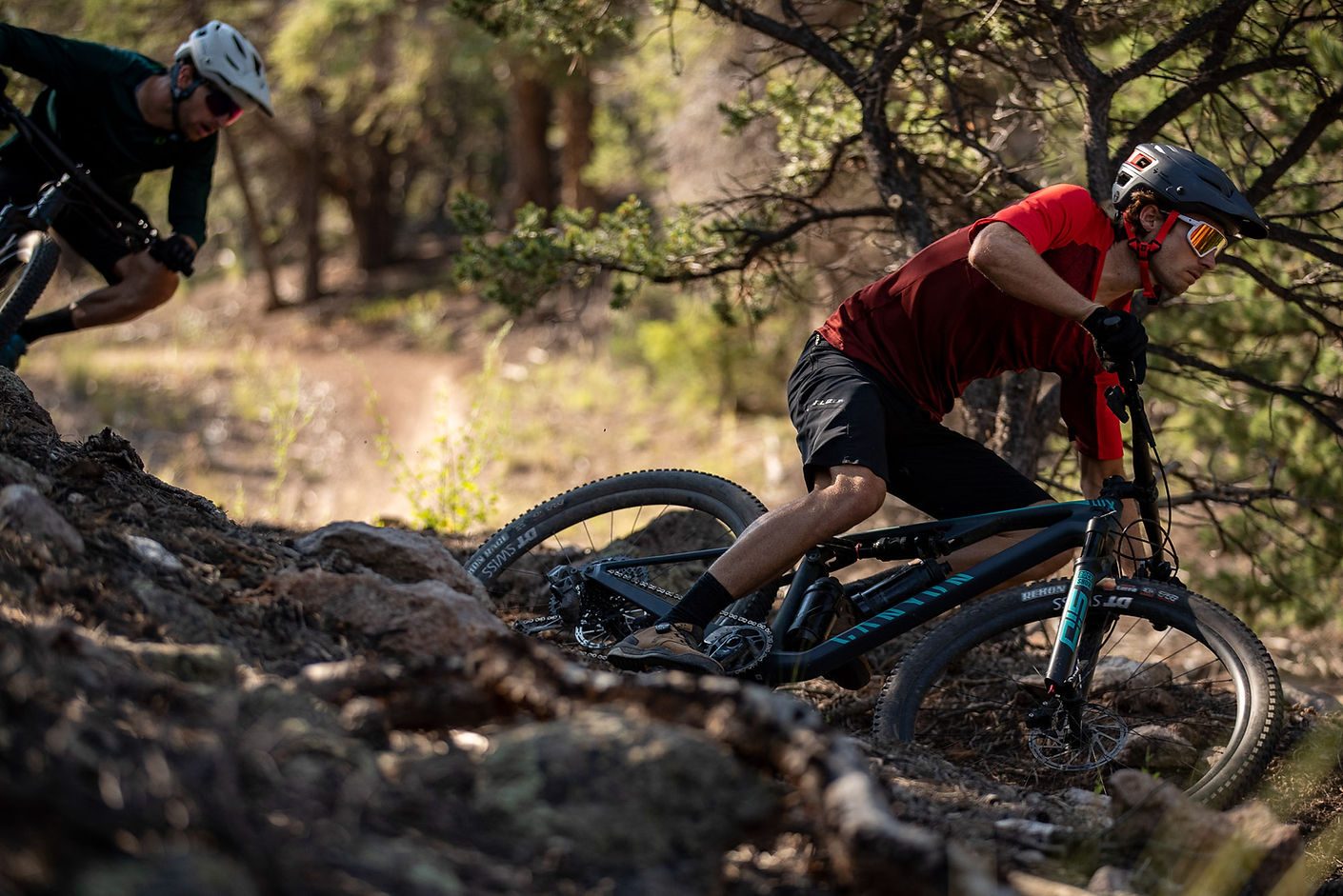
BUILT FOR SPEED
Every component on the Lux Trail has also been picked to enhance your descending control—ensuring you’re at our fastest, both up and down the mountain.
• Wide (760 mm) riser bars provide the rider with a wide stable stance on the bike.
• Dropper seatposts let you get the saddle low and out of the way, improving your control you on descents.
• Meaty 2.35 and 2.4-inch tires give you the traction you need to push your limits at speed.
• Wide (30mm internal width) rims provide excellent sidewall support on larger volume tires and improve cornering performance.
• Burlier FOX 34 Step Cast and RockShox SID 35 fork chasses and 120mm of front-suspension travel help you let loose on technical terrain with full confidence.
EVERY DETAIL MATTERS
Every Lux Trail is loaded with smart details that tangibly improve performance.
CLEVER FRAME PROTECTION
Our Impact Protection Unit (IPU) protects the Lux Trail’s carbon frame by preventing the handlebars from over-rotating into the top tube.
CLEAN, NO-HASSLE CABLE ROUTING
Internal cable routing looks great, but can be a royal pain in the arse for home mechanics. Not so with the Lux Trail. Internal tubes within the frame guide the cable and brake housing, from start to finish. Insert a new cable and housing in one end of the bike and it will pop right out at the other end—no fishing blindly about for cable housing or cursing required. The tubes also reduce annoying cable rattling and reduce the risk of contamination, ensuring riders get full seasons of crisp, precise shifting in all conditions.
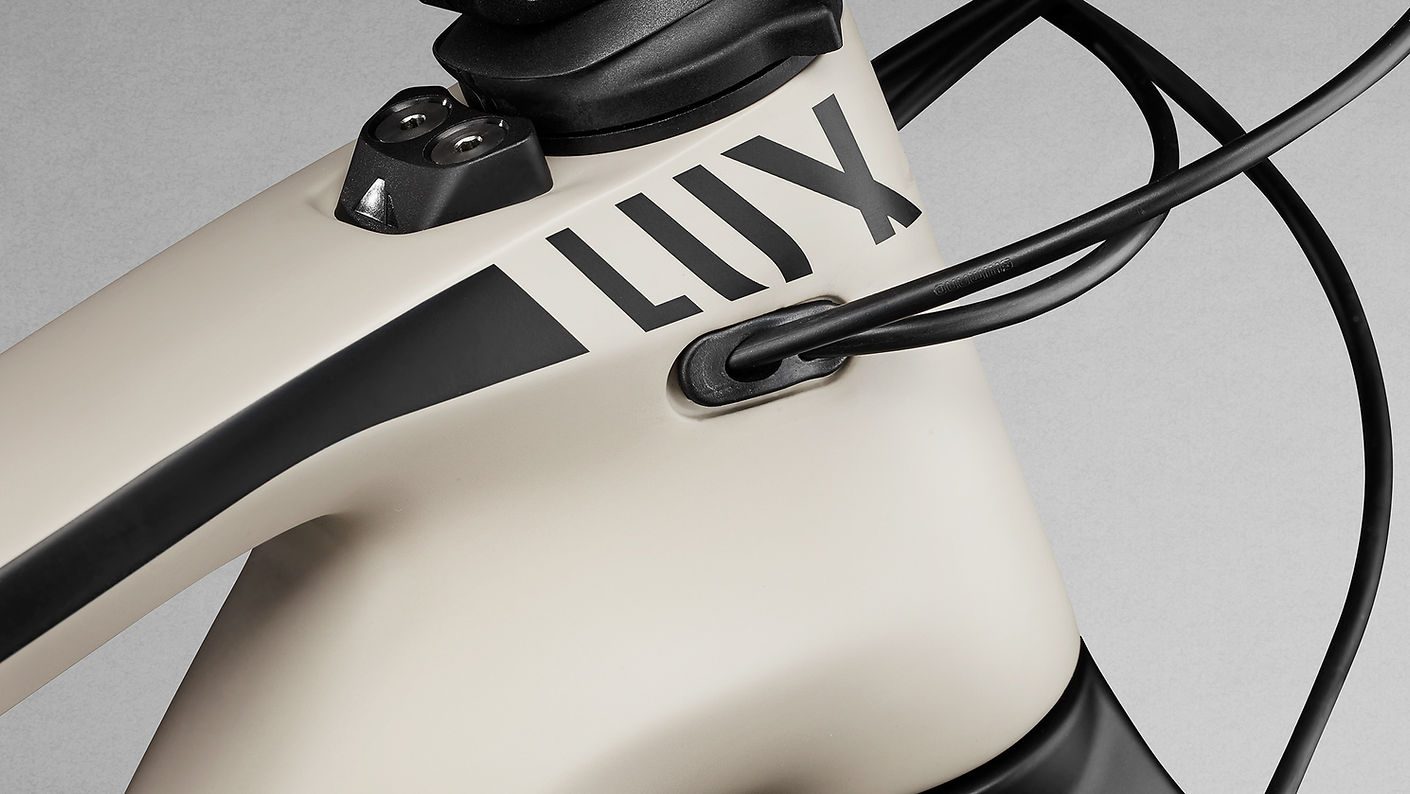
STIFF, PRECISE, AND SIMPLE
Our Quixle through-axle design boosts stiffness yet tucks neatly into the axle, providing easy, tool-free wheel removal.
LONG-HAUL HYDRATION
Big rides require big quantities of water. And yet so many XC bikes barely have room for even one water bottle within the main frame. The Lux Trail gives you all the real estate you need within the frame to bring two large water bottles on every ride.
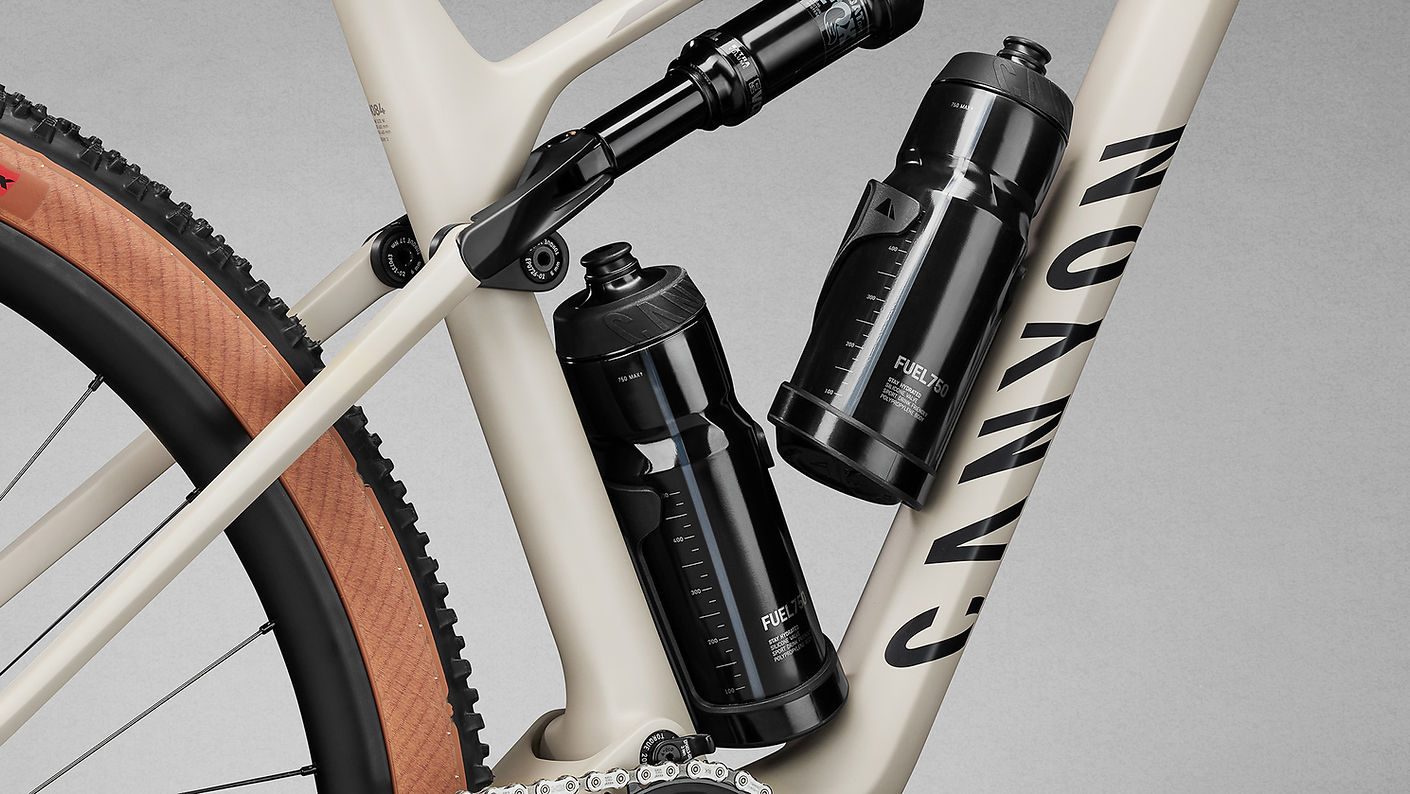
MINIMALIST CHAIN GUIDE
Dropped chains suck. Which is why we’ve equipped the Lux Trail with what might be the lightest (just 3.7 grams), sleekest chain guide ever created.

Review: Galfer Brake Rotors, Adapters, and Pads
A wise man once told me, in the context of going fast on two-wheeled machines, that “brakes just slow you down”. Never a truer word was spoken, albeit delivered with the intention that you should do whatever it takes to stay off them and keep the throttle twisted/pedals turning for as long as possible, with the levers only deployed as a last-minute resort. In a way, the wise man wasn't only championing not braking, but having good brakes to call on to do their job strongly and instantly. It's somewhat ironic that, at the time of the imparted wisdom, disc brakes were still new tech in the moto world, and coaster and caliper brakes would continue to rule the bicycle realm for a good couple of decades yet. How the times have changed.
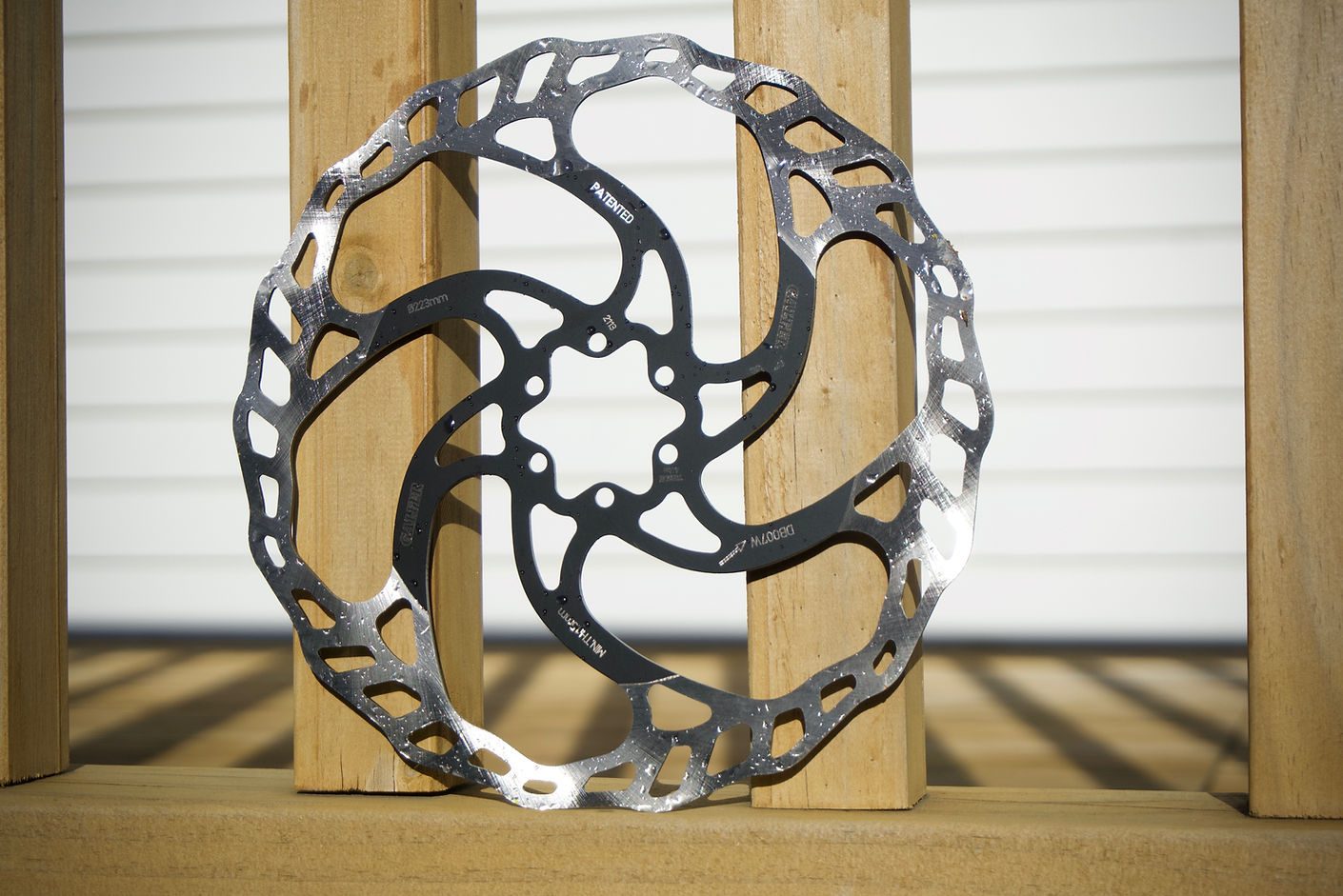
Today, those words still ring true, and we are blessed that we can “lay off the stoppers” until the very last instance, as the power of modern mountain bike brakes is far superior to anything we tried to stop our two-strokes with back then. It's inevitable that crossover between the two sports has taken place, with moto companies either having influenced development within the bicycle industry, or jumping into the pool completely and applying their experience to the testing waters. Spanish company Galfer has taken the latter approach and is offering a wide range of braking options for the pedal set.
If you've never heard of Galfer you're probably not alone, yet they are not exactly a new player in MTB, having developed brake pads for bicycles since 1990. Their automotive history goes back as far as 1952, so they know what they're doing. Being mainly marketed in Europe for most of that time, they are now expanding into the international market in a big way. I was excited to see their name here in NZ and, serendipitously, I was looking to upgrade my eMTB brakes when I saw that FE Sports were distributing Galfer down under. A set of 223mm rotors, eMTB specific pads, and the necessary adapters were soon on their way.
The stock brakes on my eMTB were not bad, but not outstanding either, so I thought it would be a good test to see how much difference bigger rotors and special pads would make. The Shimano 4-piston calipers I was using were at the lower/mid-end of their range, so could they be made to work like a high-end calliper? Short answer, yes! Immediately the power was increased, noticeably, and the feel at the lever was definitely more 'grabby' - in a good way, like a sensation of the pads biting the rotor rather than dragging on it to slow the wheel. Whether this is due to the semi-organic/metallic compound or the bigger rotors, well, I'm not sure, but I'd say a combination of both is likely the answer. There is no noticeable increase in rotor flex over a 200mm disc, as the 223 uses a thicker 2.0mm steel which keeps them straight and resists/dissipates heat build-up better. The Centrelock to 6-Bolt adapters are beautifully made, by the way, and the tight interface between them and the rotors no doubt helps with the solid feel also.
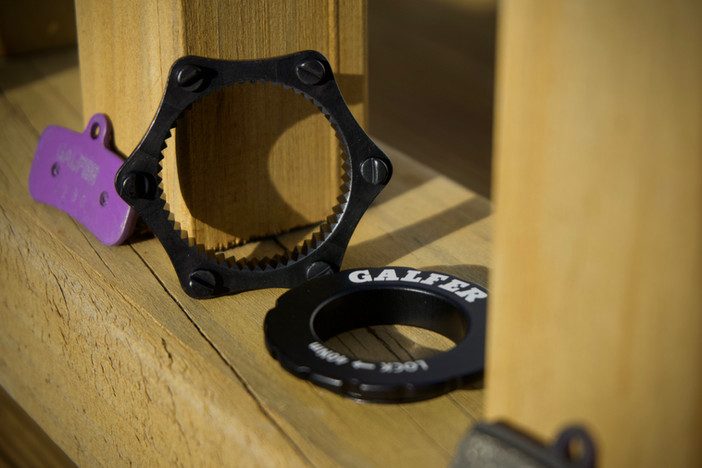
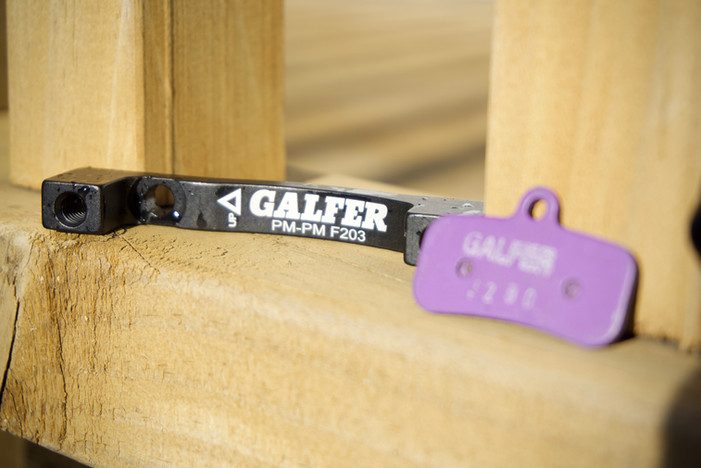
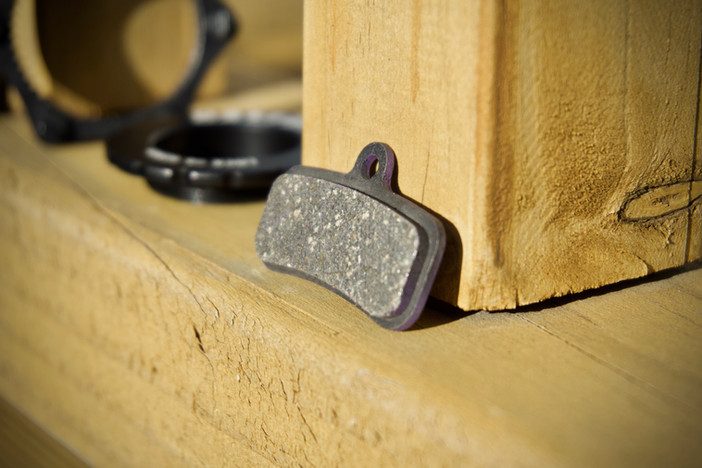
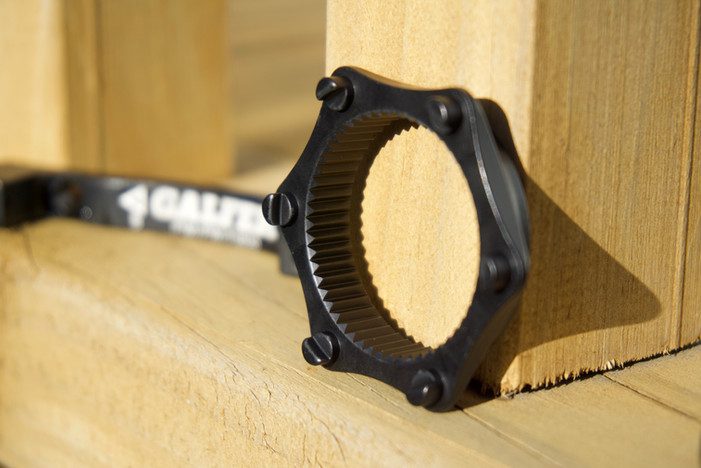
Having recently upgraded the callipers to Shimano's Saint model has stepped up the power even more, as you'd expect. The bite, modulation and precision of the braking is as good as anything out there, and the Galfer components are a worthy enhancement to any brakes, from low- to high-end. If you want to go fast, you need to stop quickly and consistently, and these Spanish brake guru’s bits will have you flying with the confidence to stop. Wise words indeed.
Distributed by FE Sports
Reviewed by Brett Kennedy
Story: E-Zing Back Into it Pt. 2
Yeah, yeah - I've been going on about how bloody brilliant e-mtbs are for a few issues now. I even evangelized before actually buying one; extolling their virtues as the saviour––or perhaps even death––of mountain biking as we've come to know it. In the ensuing months, riding almost exclusively off-road with added electric assistance, I can now tell you I was wrong. So wrong. You definitely shouldn't buy an e-mtb.
For a start, good luck even finding one to purchase. The worldwide shortage of eMTBs (due to the death of Sean Connery - which we covered in the last issue) is the result of every person over 60, on the planet, recklessly flaunting their Boomer wealth and privilege to shut out anyone else who might not be old and rich. I know this to be true, because I'm constantly told that eMTBs are only to be ridden when one becomes that magical age called “old”, which is approximately 10 to 20 years older than the vintage of the complainant. Even guys who are further advanced in years than my already post-middle-age tell me they're too young, which leads me to believe the optimal time to buy an eMTB is somewhere north of 80. I'm much too young, in that case, and obviously too stupid to realise the error of my ways.
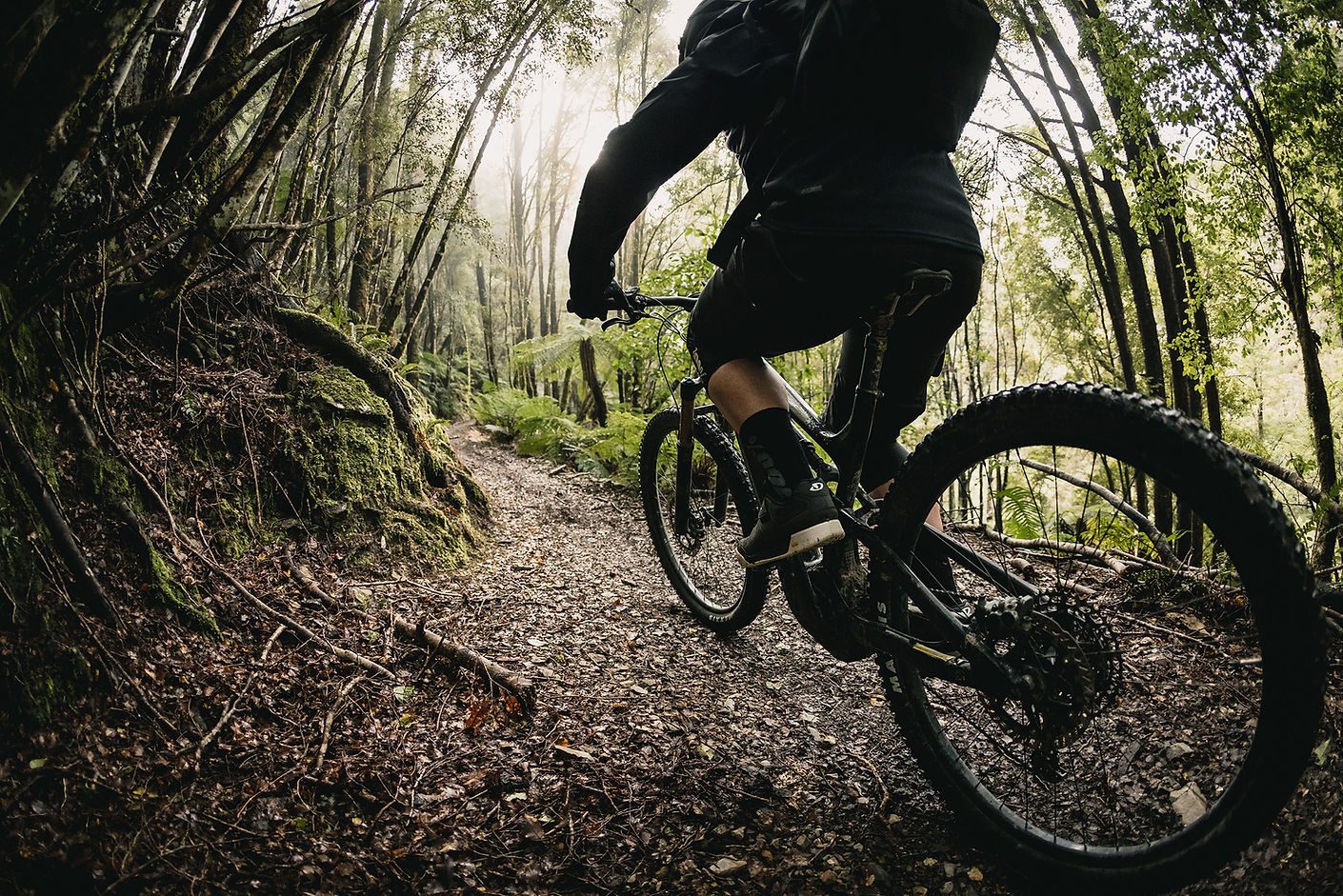
eMTBs are cheating. Not like jamming a vial of EPO into your arm or shuttling, no, these are much worse. You don't get any form of physical workout - in fact you don't have to do anything at all, just sit there and let the bike do the rest! I know this to be true because I'm constantly told by these gurus of fitness that they want a physical challenge, and that can only be attained by pedalling squares at walking pace up a 2km climb for half an hour or more. If, after a climb, your lungs aren't about to jump out of your ribcage and you're not in peril of a stroke, then you're obviously a “pussy” and have no right to call yourself a mountain biker. No, I don't care if the eMTB gets you three ascents to one and adds speed and handling challenges to the climb, if you're not starting the descent with shot legs and barely enough strength to keep the bike upright and at speed, you're basically Lance Armstrong with knee pads.
OK, so perhaps you've cheated your way up the climb with no effort at all, passing real riders and rightly earning their contempt, and now you're at the start of what can only be defined as the real reason to ride mountain bikes: the descent. There's no way you're going to enjoy this on an eMTB. I know this to be true because I'm constantly told that real bikes are lighter and also something called 'flickable', therefore they are much faster when pointed downhill. If there are real riders waiting to descend the same trail, let them go ahead, because there's no chance you will catch them with all that extra weight, low centre of gravity and bursts of power out of corners and over rises holding you back. I'm sure the electrics interfere with GPS signals too, as my Strava consistently and falsely claims that I'm faster on every descent on the eMTB, which I know to be a falsehood because real riders who only ride 'flickables' tell me so. And I'd trust them over digital data tracking any day.
I guess one of the most important and sobering things riding an eMTB has taught me, is that I don't actually like mountain biking. I know this to be true because if I did, I wouldn't be riding off-road most days of the week; I wouldn't be doing more distance per hour of riding; and I certainly wouldn't be climbing more metres per ride. And, some of the trails I ride now (which I haven't for years) well, no real rider would go near them either…. Because, there's no shuttles to get them back to the top, so obviously that track sucks. Scrambling up goat tracks, riding over rocky outcrops, picking a point on a steep hill where there is no hand-built trail and seeing if you can even get halfway up it – this isn’t real mountain biking because there's no way you can do this on a *real* mountain bike. Sheesh, when will you get it?
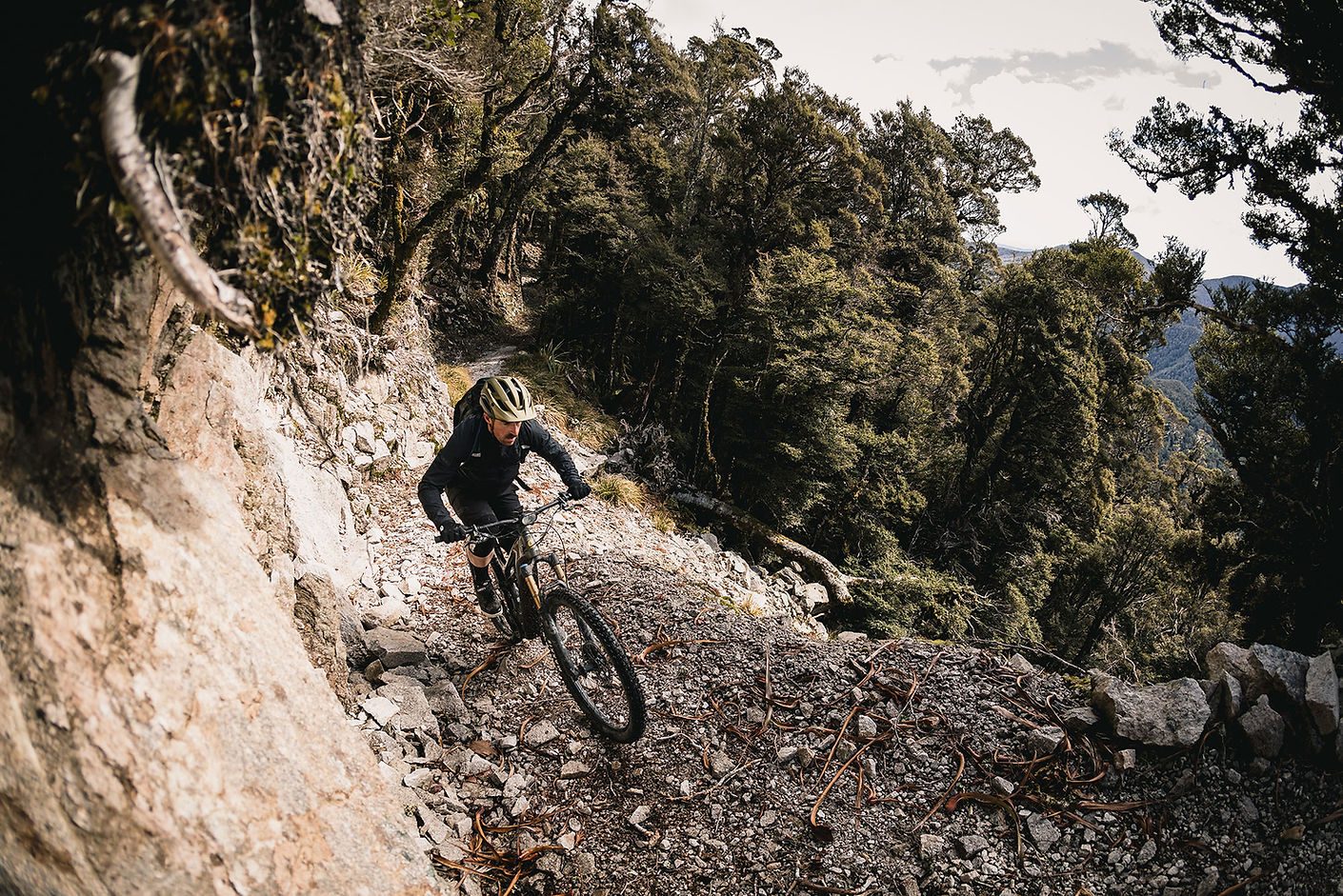
Maybe, just maybe, there will be a real eMTB for real riders one day because, right now, the technology is prehistoric and used by Neanderthals. I know this to be true because I'm constantly told by real riders that they are waiting for the tech to advance and bikes to become the size of an iPhone64 before they make any decision that could hinder their real rider status. Bosch and Shimano, etc have no clue and aren't making any advances in motor or battery tech at all, and the bikes don't ride - or even look! - like mountain bikes (despite looking exactly like mountain bikes). Yes, they do ride differently to real bikes - if you call faster, more stable and more fun different rather than better.
If you're still confused about whether to get an eMTB or not, I suggest talking to those who know best on the subject: someone who's never ridden one. They know what's up, and should be listened to. Personally, I wouldn’t do it. I don't want to see packs of fit, happy riders getting in multiple runs of their favourite trails, or heading into hills they've never been into before - and I certainly don't want to see newcomers being drawn into the sport we love and guard so rabidly from outsiders (like roadies). In fact, I'm calling for a stop to all eMTB access on anything other than fire-roads; a minimum purchasing age of 70 for new bike sales; and no new bikes to be released until technology comes up with a way for the bikes to be activated by pedalling, as I'm told that currently it's not actually required on these abominations. And, won't someone think of the shuttle companies?! I never thought I'd see the day when mountain bikers would get to the top of the hill with motorised assistance, or indeed pedalling - and you should not contribute to the inevitable rapid downfall of the sport! I'll be getting rid of mine pronto, buying a diesel Hilux and a 20kg DH bike and saying “e-bikes suck” at every opportunity. That's real.
Words: Brett Kennedy
Images: Cameron Mackenzie
Story: E-Zing Back Into it Pt. 1
You don't need me to tell you that 2020 has been a shit year. Most say it's “strange” - but that's an understatement, and a deflection of the way the world has changed. Few realise the true impact that this significant event will have on all our lives in the future, and that they too will be directly affected by this sudden, unexpected development.
Yes, E-bikes have gone mainstream.

If you'd told me at midnight on December 31st 2019 that I'd be evangelising pedal-assistance for mountain biking, I'd have rightly claimed you were drunk and somehow dizzied by the euphoria and expectations of a bright new year. Well, that all got turned on its head around the middle of the year, when everyone cottoned on that riding bikes was a good way to pass the time. Suddenly, we had a lot more of it on our hands due to the other big event of the year: the death of Sean Connery. The weeks of stay-at-home mourning for the great actor and inspiration to bald men worldwide, opened up a chance to look deeper into our souls and ask: “do I want to ride more?” The collective answer was a resounding ‘yes’.
Apart from Bond dying and electrification of the world in full swing, ‘20 was shit because I spent most of the early part of the year with only nine functioning fingers - one too few for any kind of off-road bicycle action, which had caused the injury in the first place. Forbidden under the Connery lockdown anyway, it wasn't too much of a problem and the now-compulsory, solitary confinement Zwift seminars became a tolerated form of simulated exercise - without all the distractions of 'fun' and 'fresh air' and unneeded peripherals like 'dirt', 'rocks' and 'trees'.
Eventually, we were released back into the wild, Bond was burnt to a crisp and we all got on with our lives, albeit now always carrying that dreaded number with us everywhere: 007. Everyone was thinking the same thing; “gotta get an e-bike”. But, as with all great crises, supply was outstripped by demand and the masses started to gather in larger groups at the local dispensaries, fighting over any remaining stock and trying to get as high up on the lists for the new drug as soon as it was released. The people needed E and, like street junkies, they were prepared to do anything for a fix. I had to use my insider trading knowledge to get ahead of the pack and secure my own hit first, even if there was unsurety as to whether I actually needed it or how it would be of any benefit to my life. Fuck it - what harm can throwing oneself into the deep end of a black, deep, murky pool while hooked up to mains power actually do? The results would be shocking, but not totally unexpected.
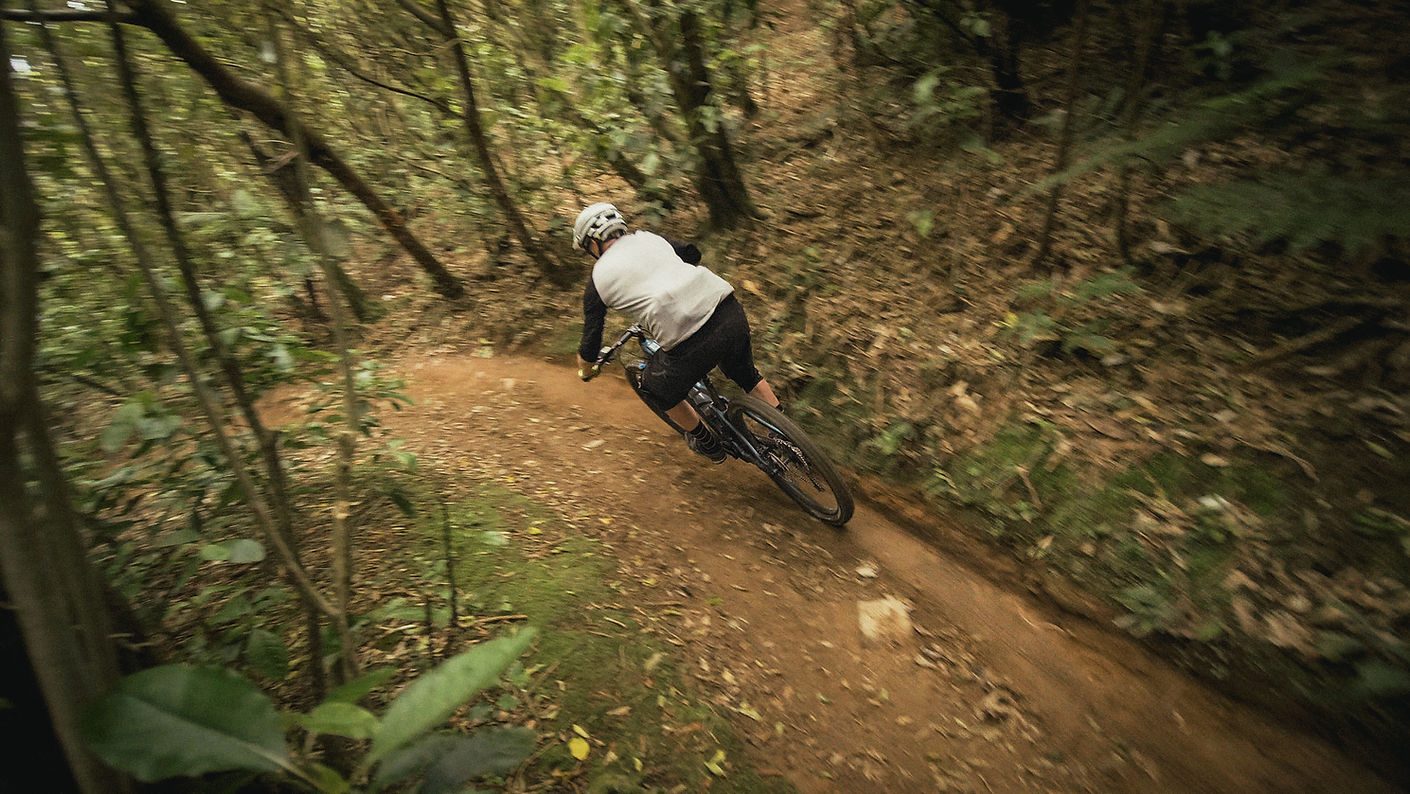
“E-bikes are for the lazy!” … “They'll make you fat and unfit!” … “It's cheating!” … These were all warnings that were heeded then dismissed like a true junkie. “This smack has battery acid in it? Meh, can only give it more kick, right?” These doomsayers were no doubt uninformed, biased and had no actual experience in the real world. I'd dabbled in small doses, and have never been afraid to get in at the pointy end when others would take a wait and see approach, looking for safety in numbers and a degree of 'everyone else is doing it now, so I will too' safety-net thinking. I was ready for the backlash and public shaming, but it never really amounted to any level that would cause banishment from society. Maybe I was onto something?
When a commodity is in high demand and short supply, the truly addicted will do whatever it takes to acquire it at any cost. I was prepared to pay more than I ever had for my addiction, and even look beyond my regular dealers. After a lean year when other substances from the same cycling family took over, I wondered if this was really still a habit I wanted to feed. I'd grown tired and bored of the slog uphill for a run back down, and even that aspect didn't deliver the same euphoria as it once did. I was fat, lazy and drunk - the perfect criteria for buying an e-bike, surely. It was time to reopen the gateway that mountain biking offered so long ago, and let in a new beast altogether.
For a so-called drug of choice, the options were more than a little limited with the uptake of new users. My research led me to a list of requirements that were met by the Scott Genius E-Ride. I'd ridden a mate's bike and wanted the Bosch motor and bigger 625wh battery. I couldn't get the first hit quick enough but, like an overeager kid in a candy store, I managed to put myself out of action for another week while heaving the beast into a work stand. Remember kids, some drugs are heavier than others so proceed with caution. Finally, garnished to my liking, we hit the trails.
Spoiler alert: I enjoyed it. I really liked it. I fucking loved it. Being fat, lazy and drunk doesn’t help - but it also wasn't a hindrance either. I finished that ride spent, if not more than I would've been on an old-fashioned bike. I'd ridden further, faster, and had a hell of a good time. Sorry. Sure, I couldn't walk comfortably the next day, but I couldn't wait to do it again. As with any drug, the long-term effects are the most important, but for now the short-term ones are hitting the spot. Whether the good times endure, or there's a massive comedown, will surely be determined in the honeymoon period between now and the next issue.
Words: Brett Kennedy
Images: Fin Lloyd
Story: Young Ones - Cam Beck
There must be downsides to life in a provincial town. Views of countryside and forests in all directions are all very well, but some of the opportunities available to big city kids are simply not there for their country cousins.
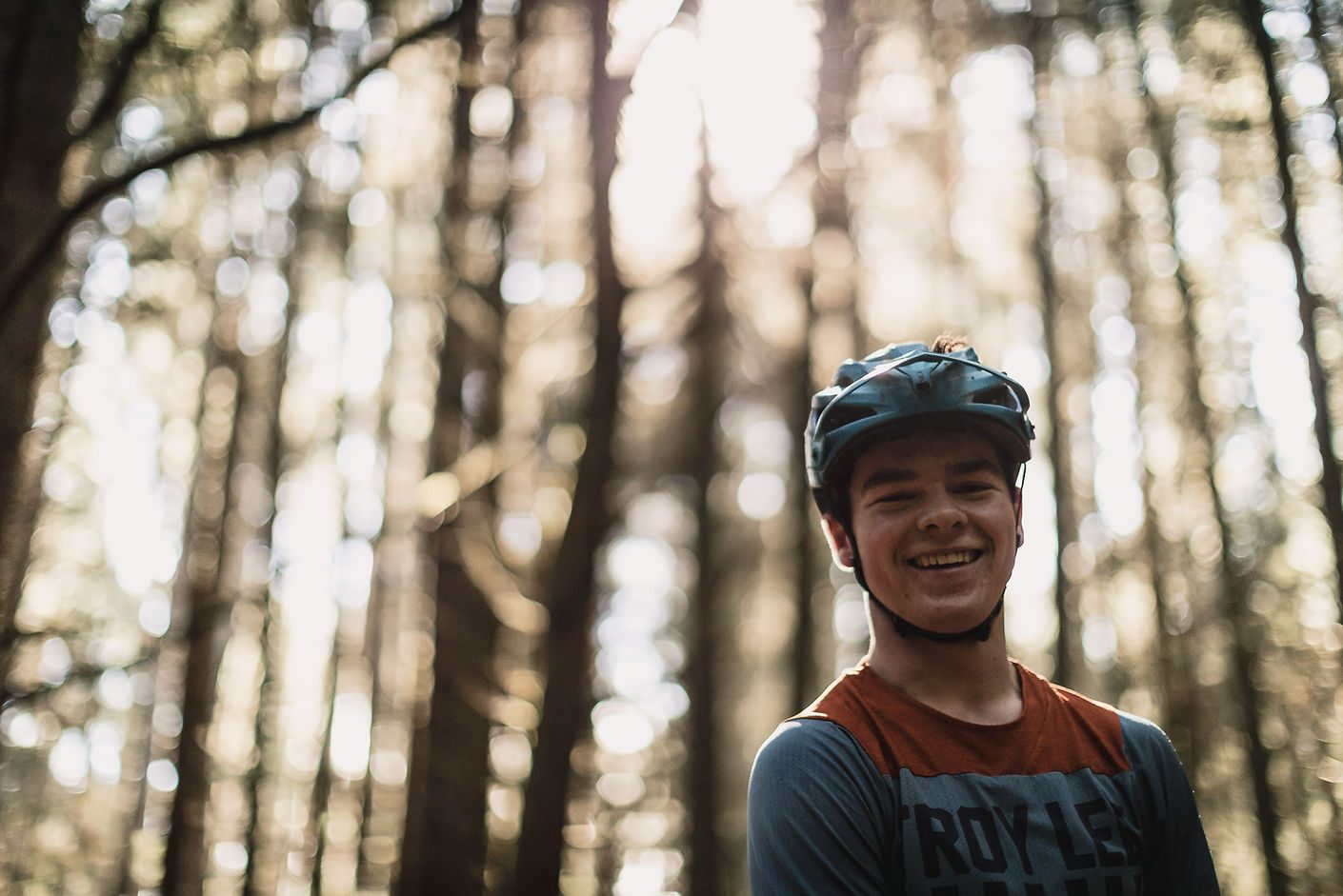
That cuts both ways, though, especially if the forest you can see at the edge of town is full of trails. Having a huge and growing trail network on your doorstep goes a long way towards making up for any lack of big-city amenities if your life goal is to be a great mountain biker.
Maybe your life goal gets that way because the trails are there? That’s a chicken and egg kind of discussion which really can’t be solved, but the procession of talented mountain bikers hailing from small town New Zealand is seemingly endless.
Cam Beck took his first ride in the Whakarewarewa Forest when he was eight years old, and he was hooked right then and there. Tagging along with his parents, he quickly caught the bug to test himself in events. Entering cross-country races from the age of ten didn’t result in instant success, but it didn’t put him off racing, either - it just set the hook a little deeper.
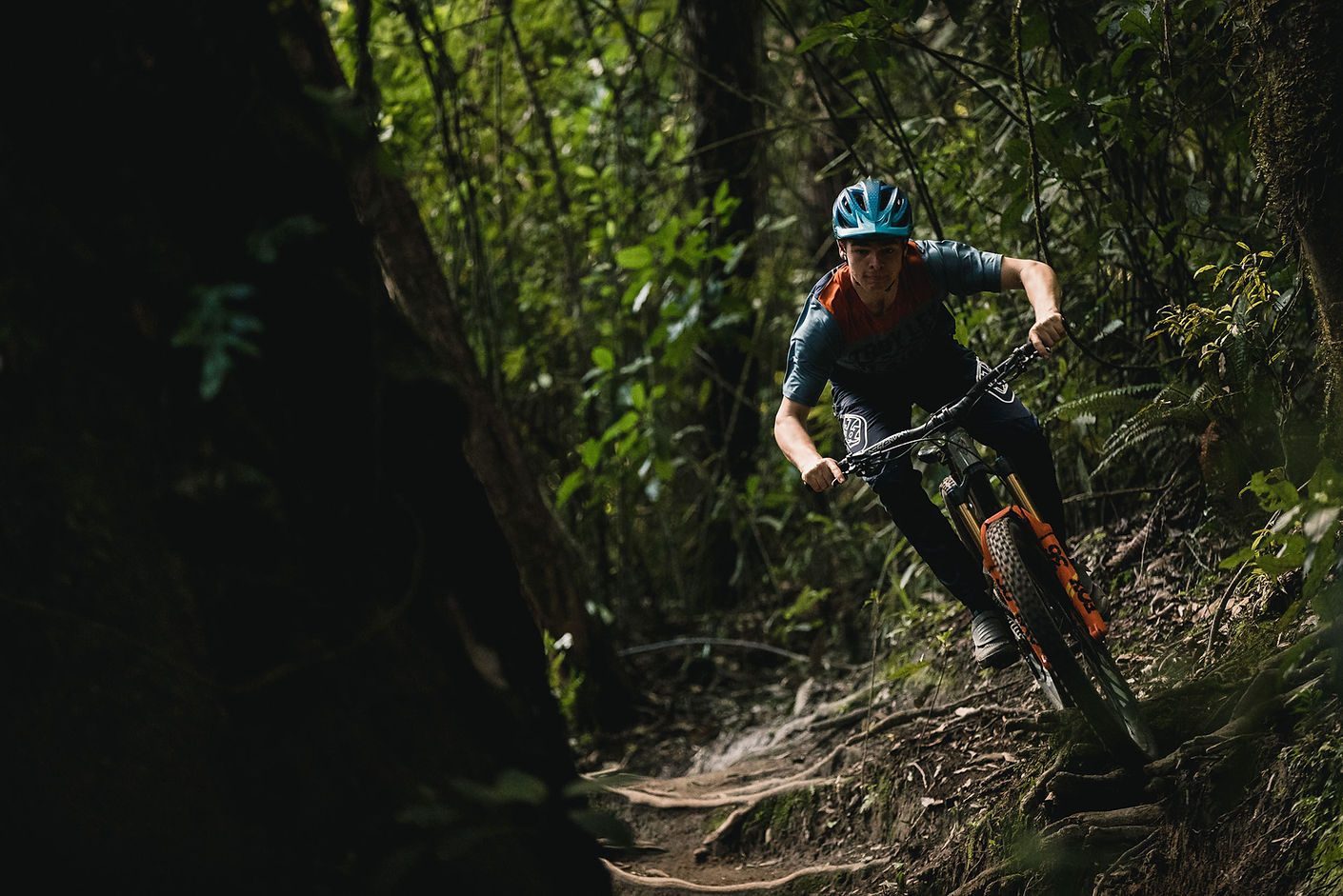
For the next few years, he honed his skills, and by his early teens he was well up in the field at any race he signed up for. As enduro events gained momentum, he gradually moved over to the gravity side of life. Each event was a learning opportunity, and small successes led to bigger ones. With every passing season, Cam became more determined to give the sport a real go.
Getting tight with a local bike shop is a key factor for anybody intent on competition. In terms of equipment, bike racing must be among the most complicated athletic endeavours there are - especially at the pointy end of mountain bike racing. So many elements need to be working at their best - besides the obvious one, which is the person on top of the machine. A relationship with a shop that has your back takes a while to establish, but once made it is a symbiotic thing of beauty. The shop gets a customer who will keep coming back, and the rider gets a team behind him to make sure everything runs sweet on race day. Nzo / Ride Central is a locally owned independent store with a comfy lounge-room aesthetic that Cam has called home base since he got started.
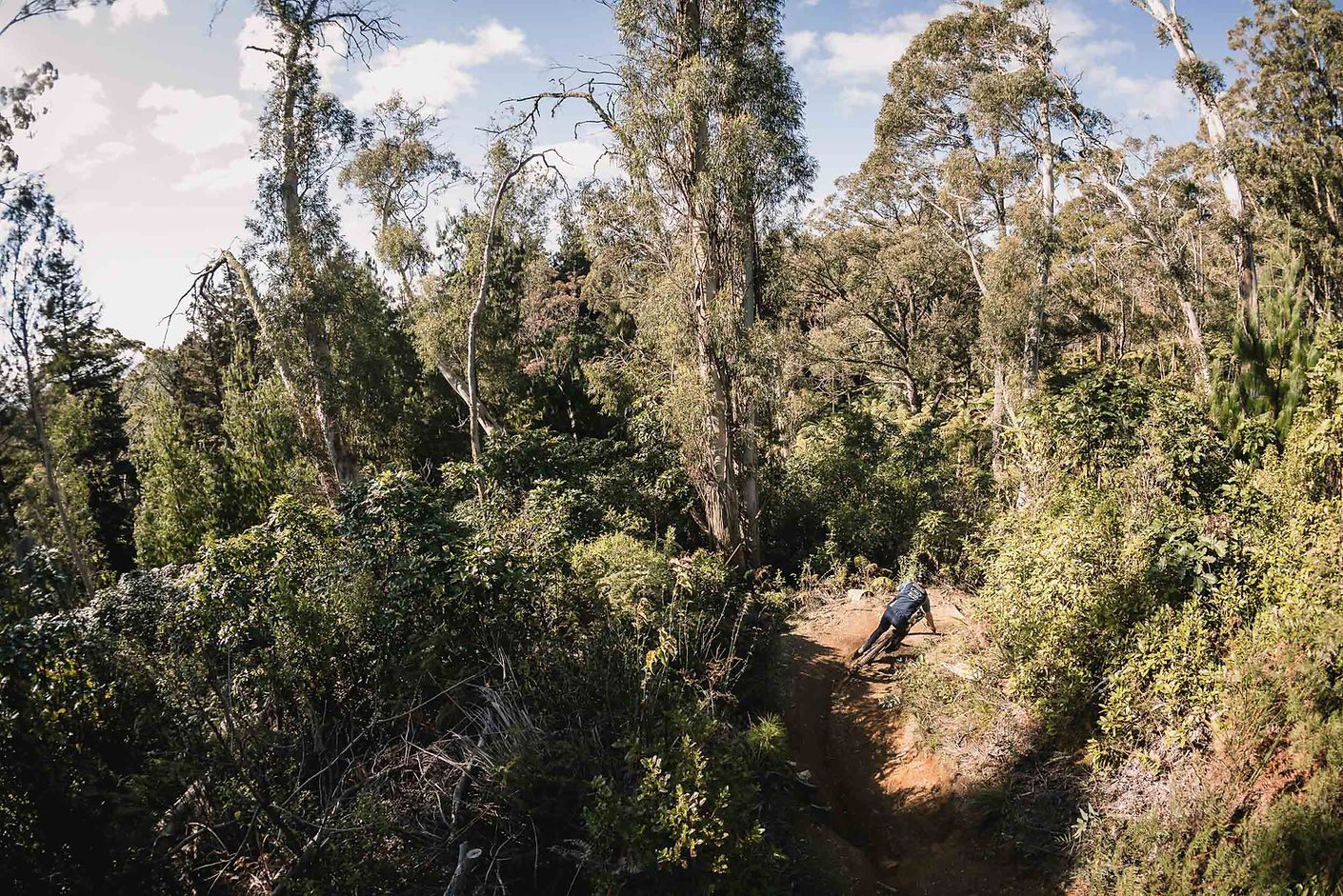
Cam’s home is a quarter of an hour southwest of Rotorua, in the heart of an area offering some of the best road riding anywhere, deep in the Waikite Valley. If the forest wasn’t so well-endowed with trails, Rotorua would attract people to ride the roads out there. Plenty of locals do just that; quiet tar seal leads riders through farmland and patches of forest - Cam makes use of the valley roads on a weekly basis. Gym work three days a week, and at least five rides in the forest, rounds out the workload under the watchful eye of coach Mark “Cabin” Leishman.
Mike and Sandra at Hyperformance Hardware gave him good deals on the bikes he rides; an Ibis Ripmo for enduro, and a Santa Cruz V10 for downhill races.
Cam has been able to get some great results under his belt, the best being a win in the Under 17 category of the 2020 edition of the Giant TOA Enduro at Crankworx Rotorua. That result would have put him second in the U21 bracket. He scored a second place in the Downhill in his age group at the same event, with a time that would have put him 13th overall.
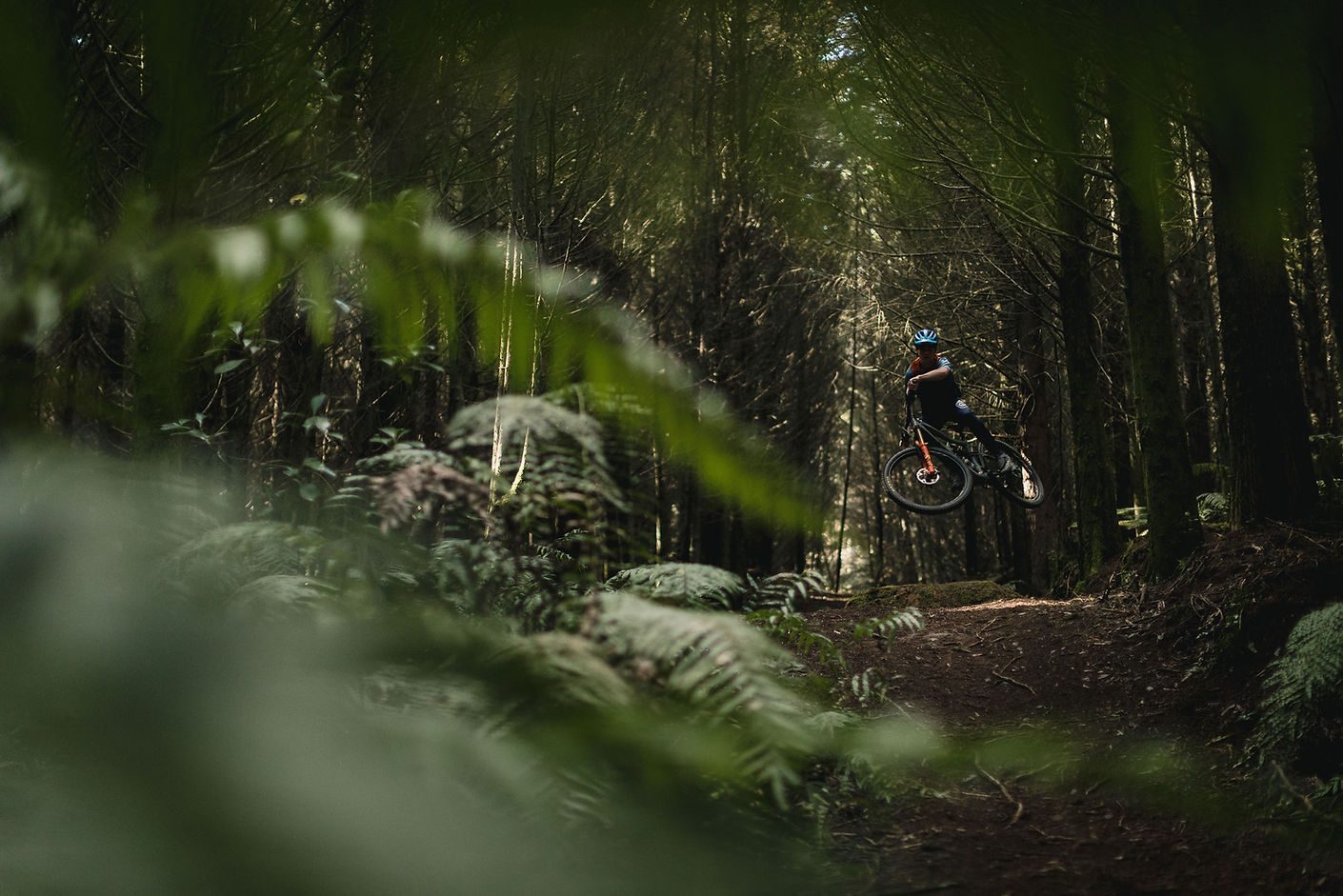
Consistently finishing in the top three or four in National level races is a great start, but if you want to find out how good you are at any type of bike racing, you have to go overseas. That is as true for mountain biking as it is for any other facet of the sport.
Dozens of young New Zealanders have cut their teeth at the local, had some success at the races, and followed through with a go at a racing career by taking the trip to Europe. Most of them have what looks like a pretty good time, some of them stick at it for quite a few seasons, and a select half dozen or so “make it”.
This year, Cam had locked in the programme for his first foray offshore.
He is way ahead on his schoolwork, and the outline for this year was to take some time out to travel to Taiwan and Australia. An Asia-Pacific EWS round in Taiwan and an EWS qualifier at Falls Creek in the Victorian Alps would have been a great experience and hopefully provided handy points for future race entries. Some EWS rounds and a downhill World Cup round were the target in 2021, but things did not go to plan.
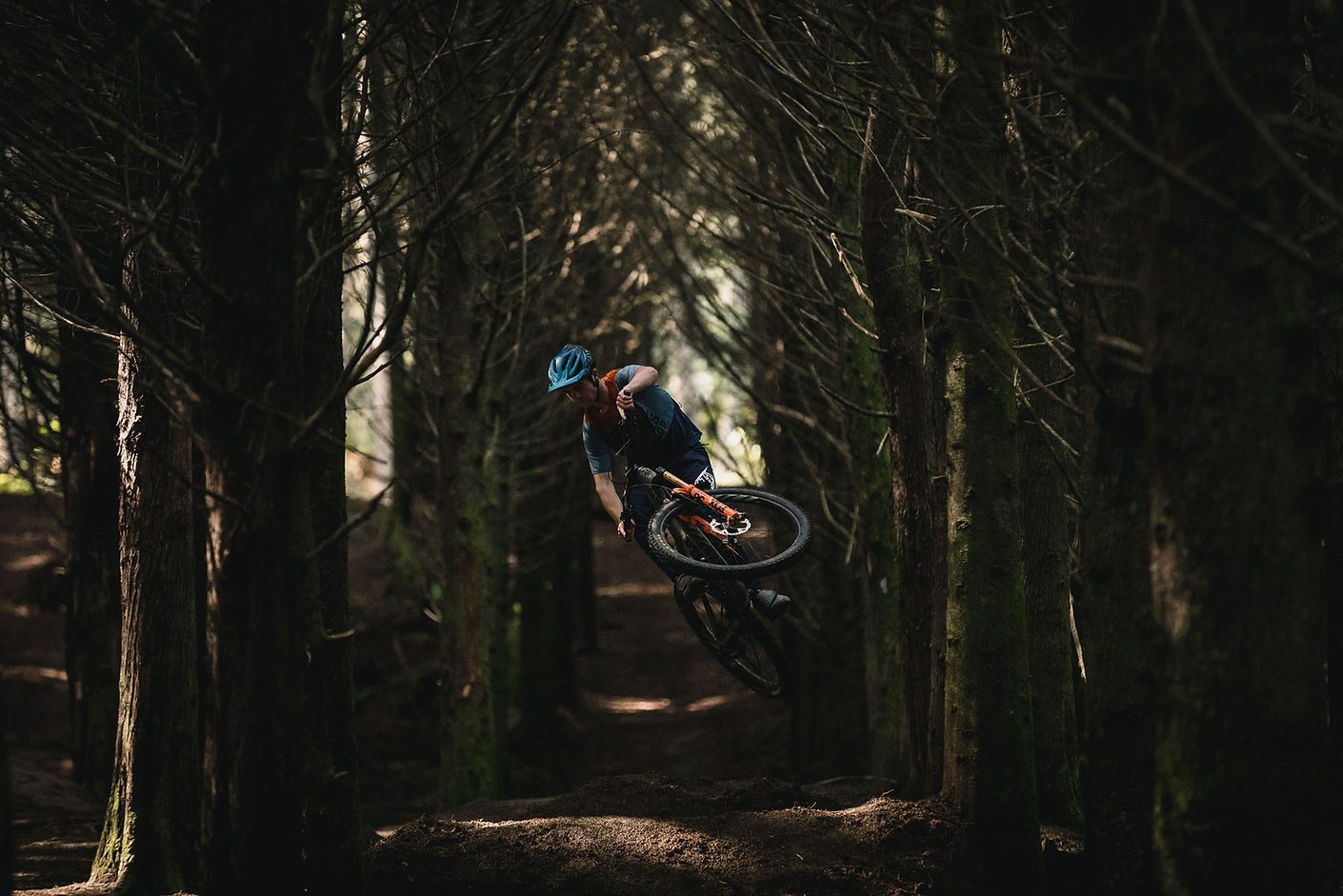
This year has not turned out like any of us expected it to, and Cam is no exception. The Coronavirus pandemic has made an international race programme difficult, if not impossible. Events have been canned, the risk of travel is much higher than usual and leaving New Zealand for a short racing trip to several countries is out of the question.
For Cam and other young kiwis on the brink of a serious go at a bike racing career, or the people already in the ranks of the professionals, it is a real challenge and a situation with many more unknowns than usual.
Planning a campaign is never easy. The broad outline for Cam still includes a red hot go at international racing after high school is behind him. Results will help him decide whether to put racing on the back burner until after uni or push further study back in favour of more racing.
Whatever the global situation dishes up, we are sure Cam Beck has a bright future in bike racing, when the time is right.
Words: Gary Sullivan
Images: Cameron Mackenzie


